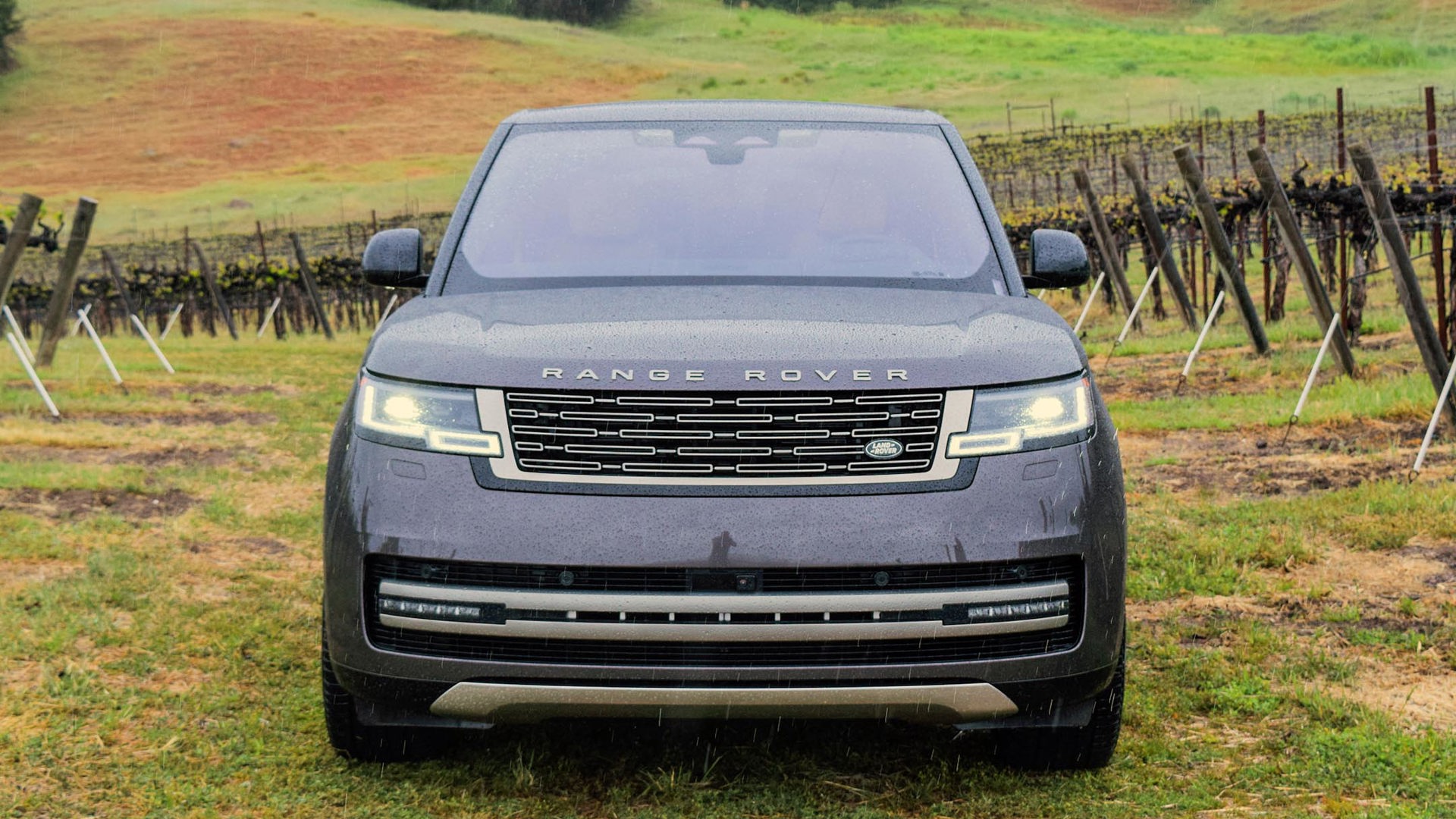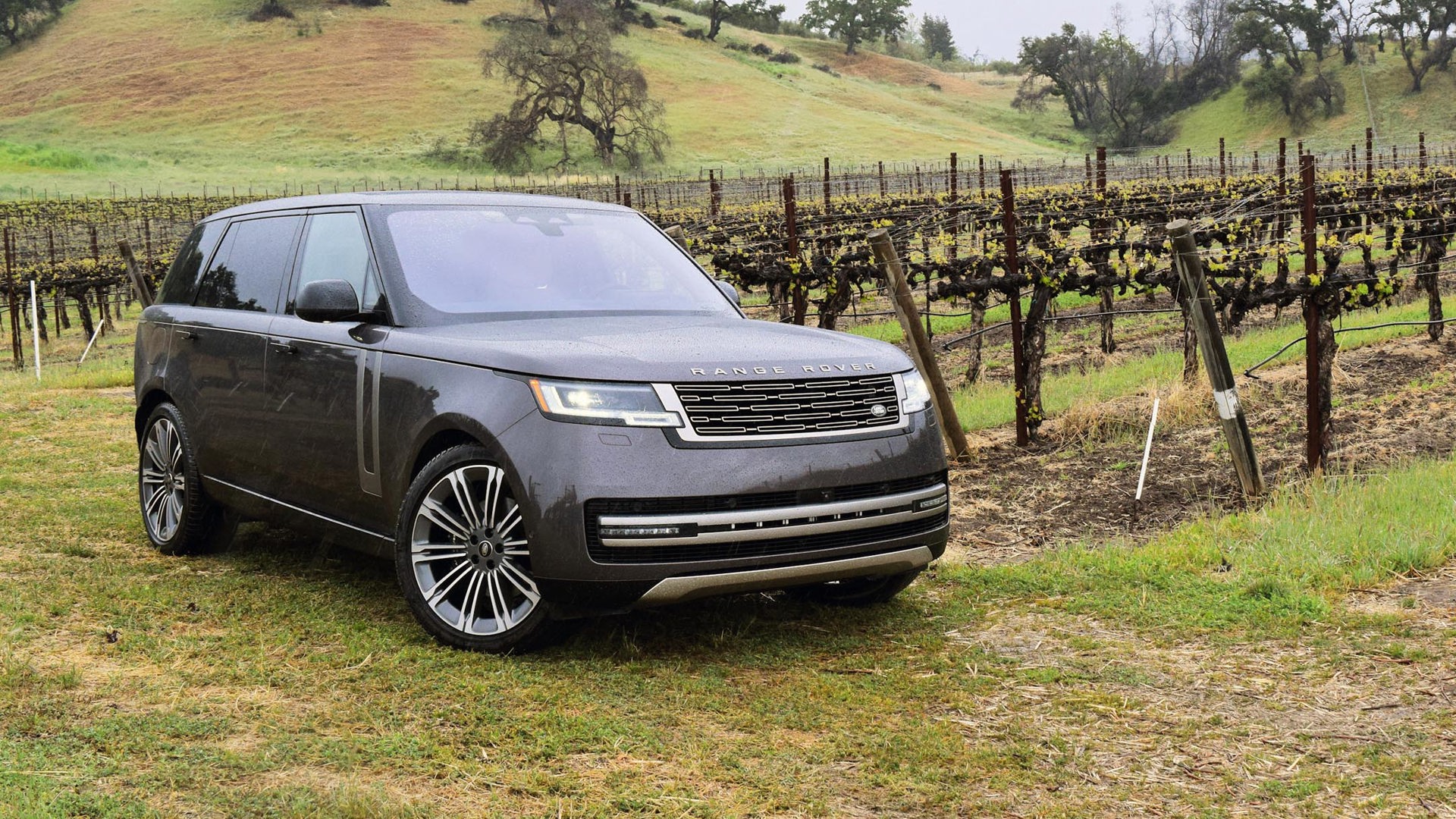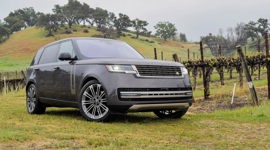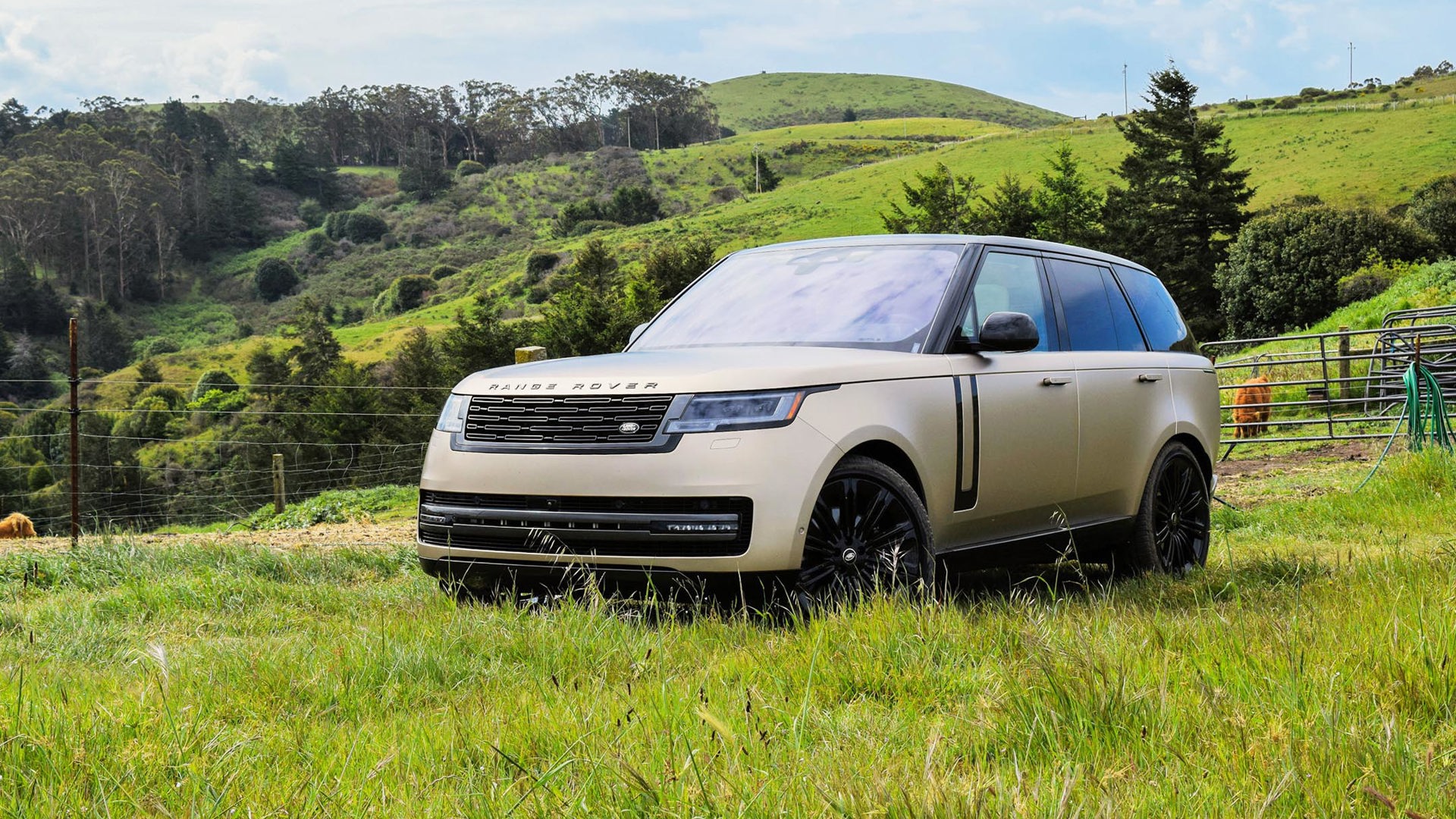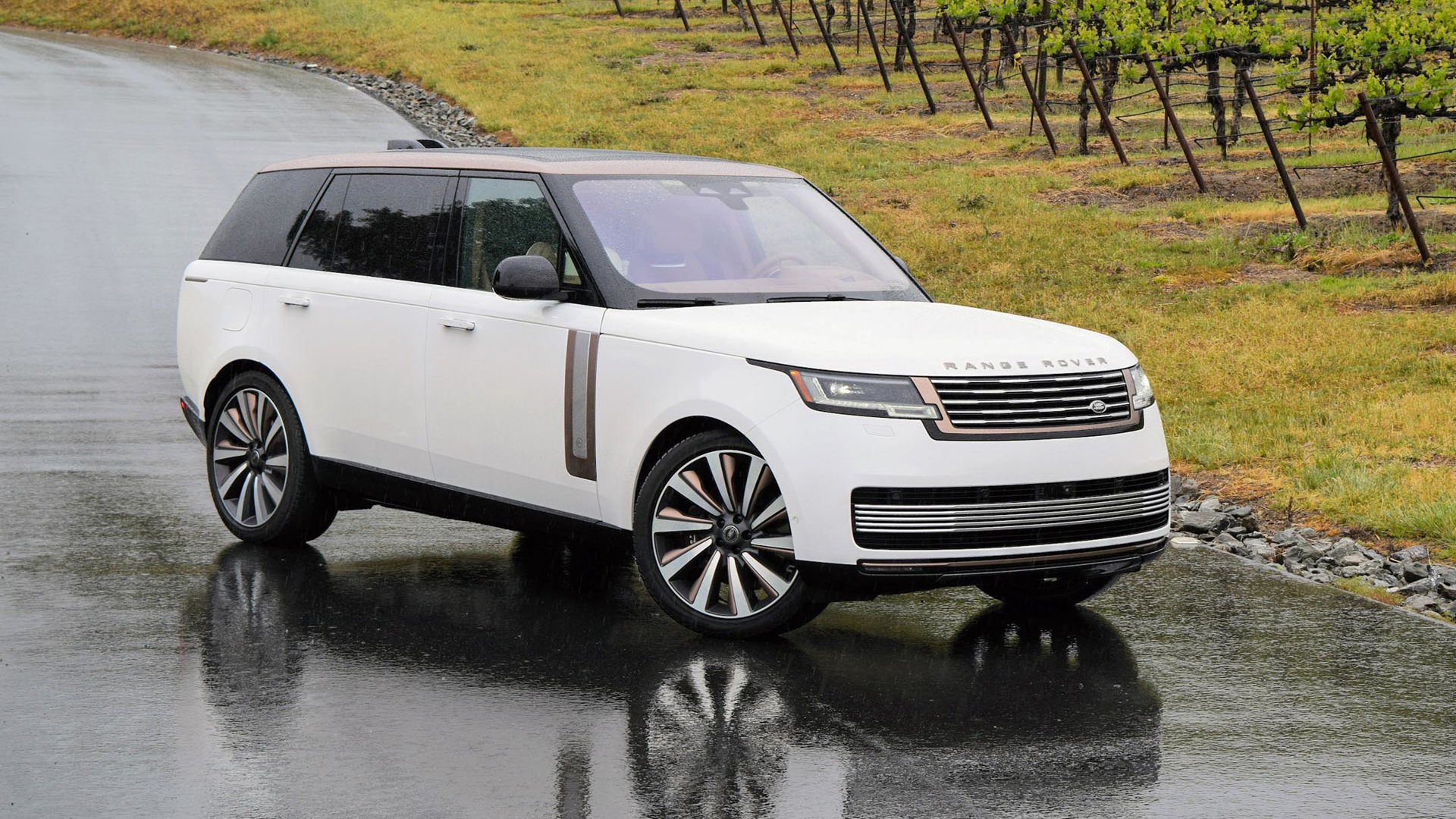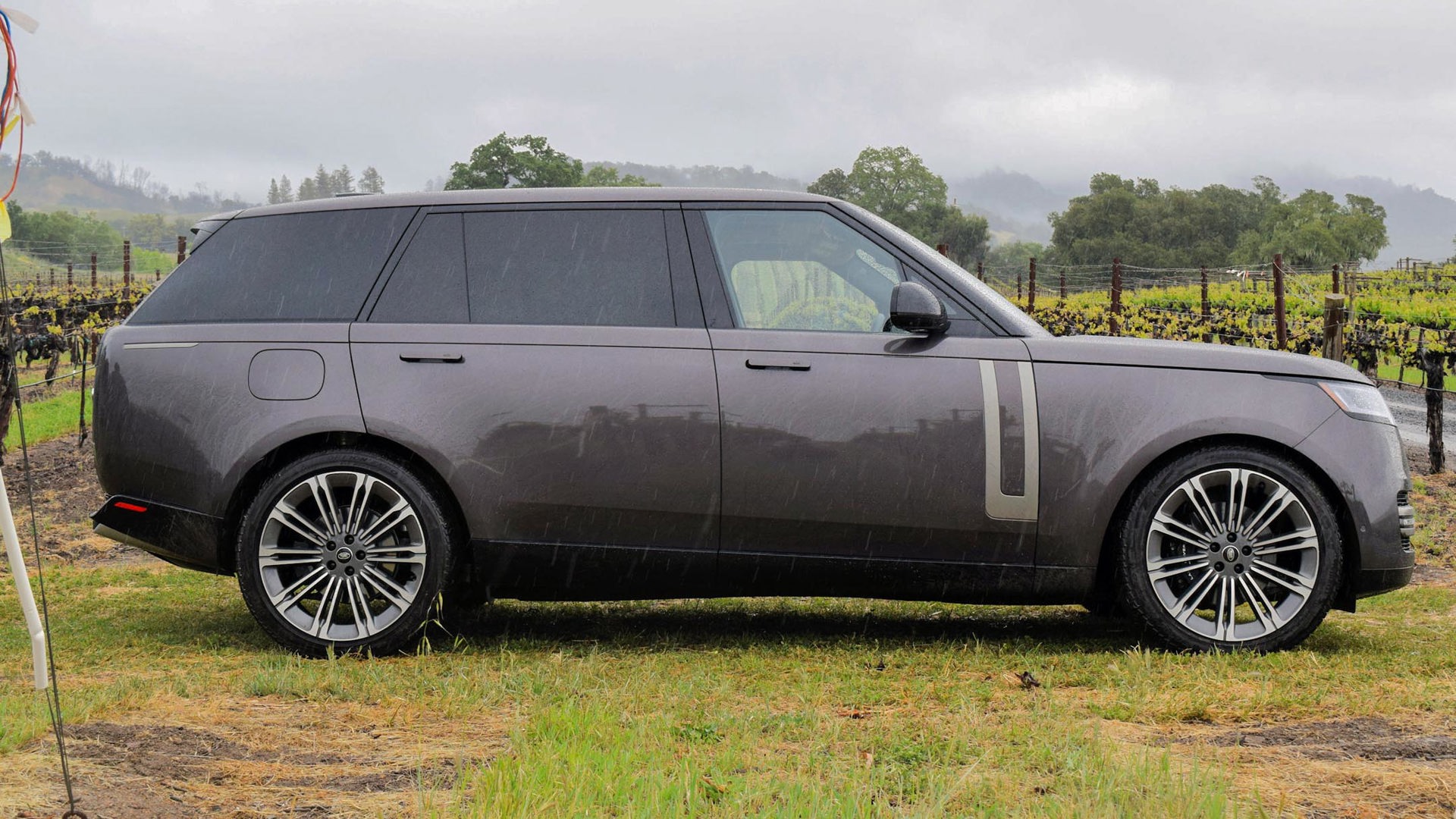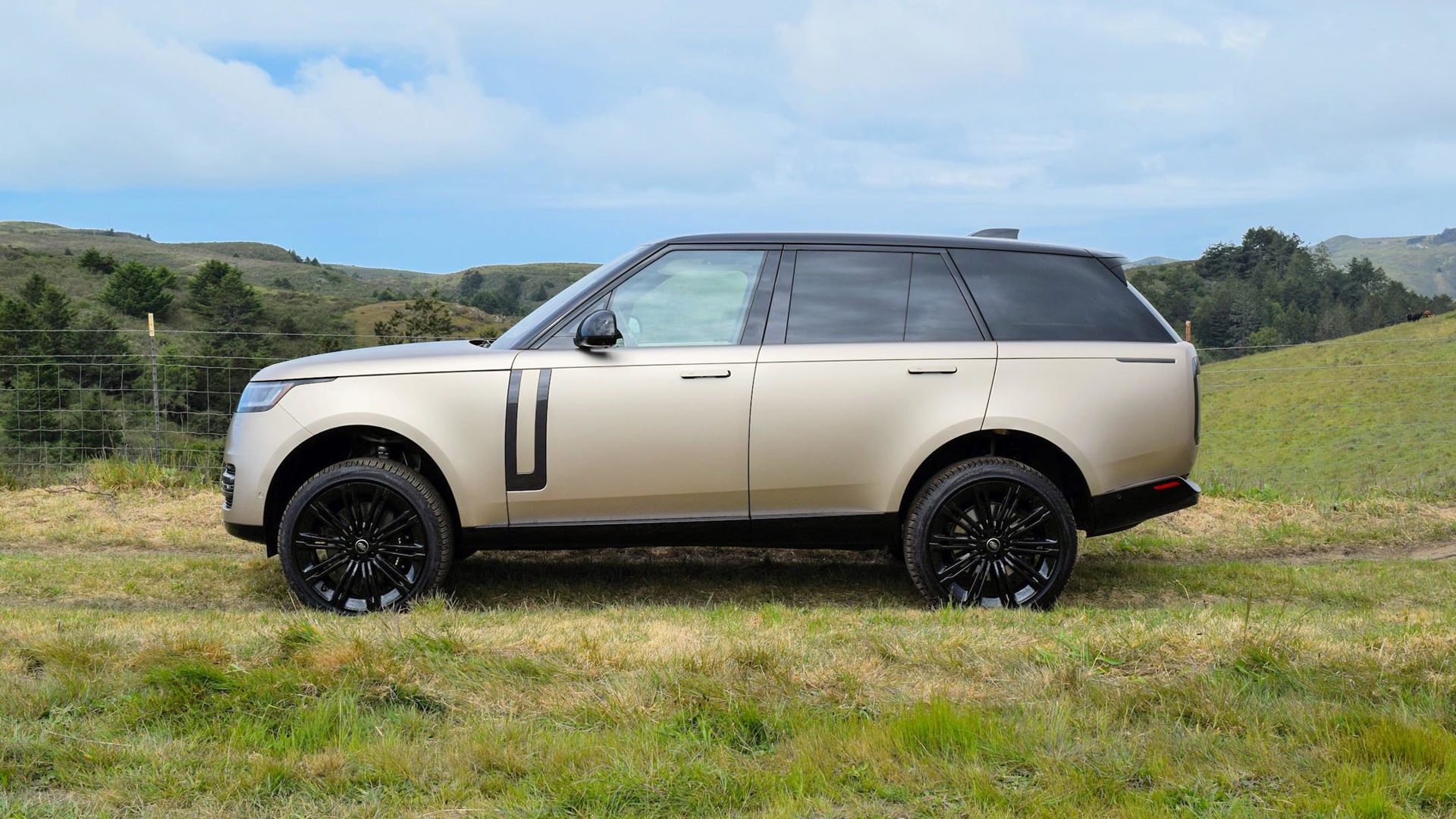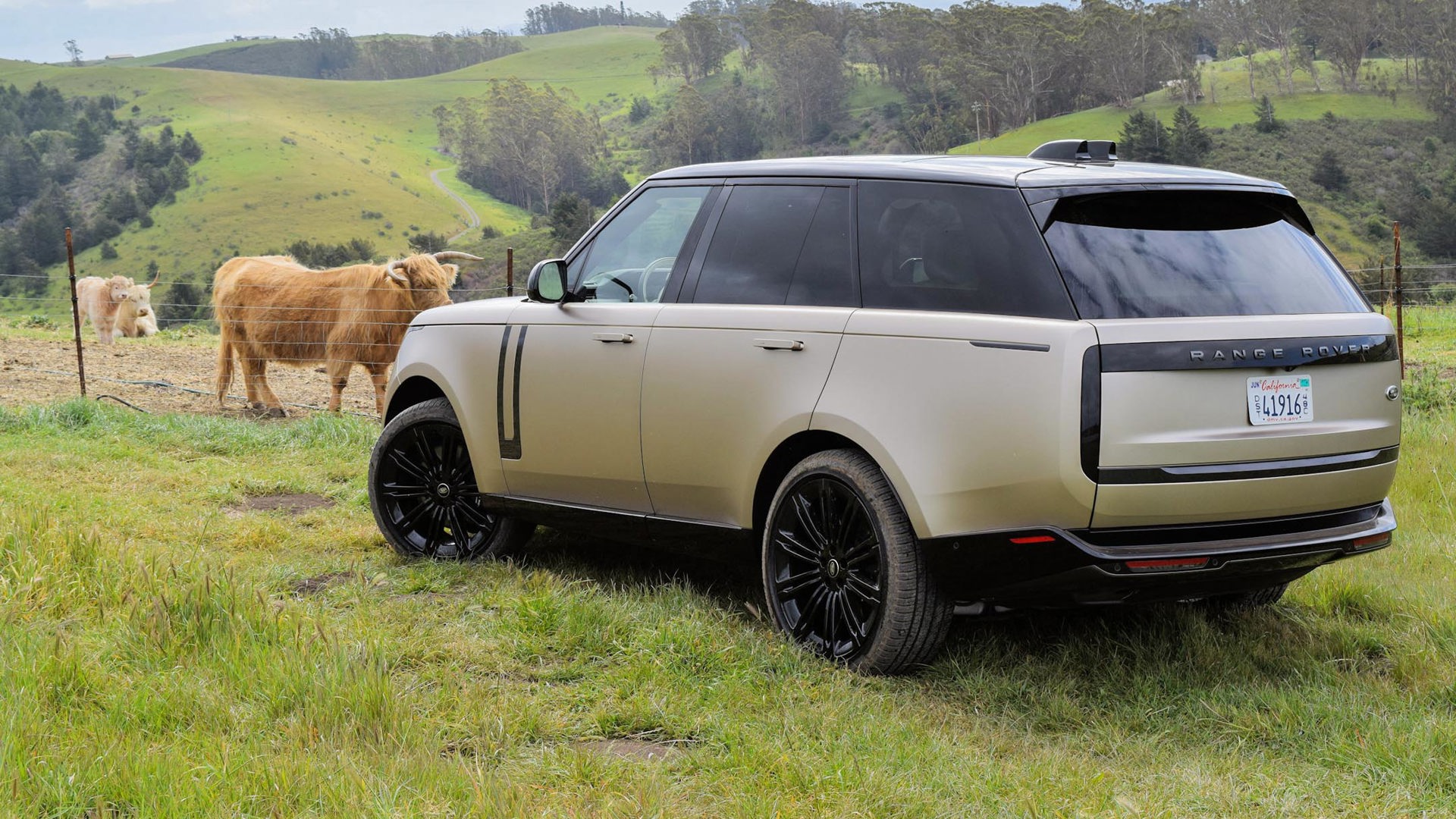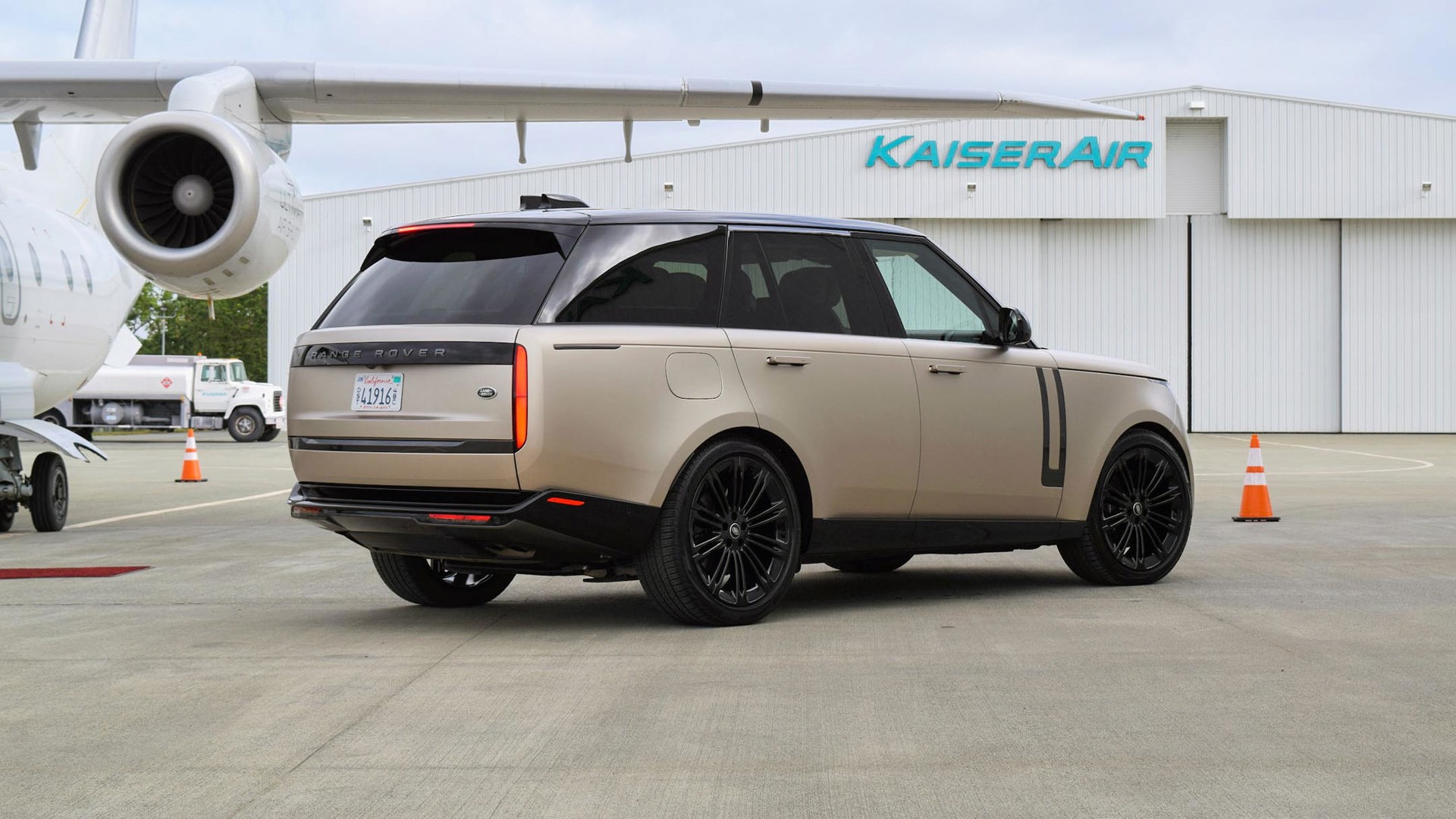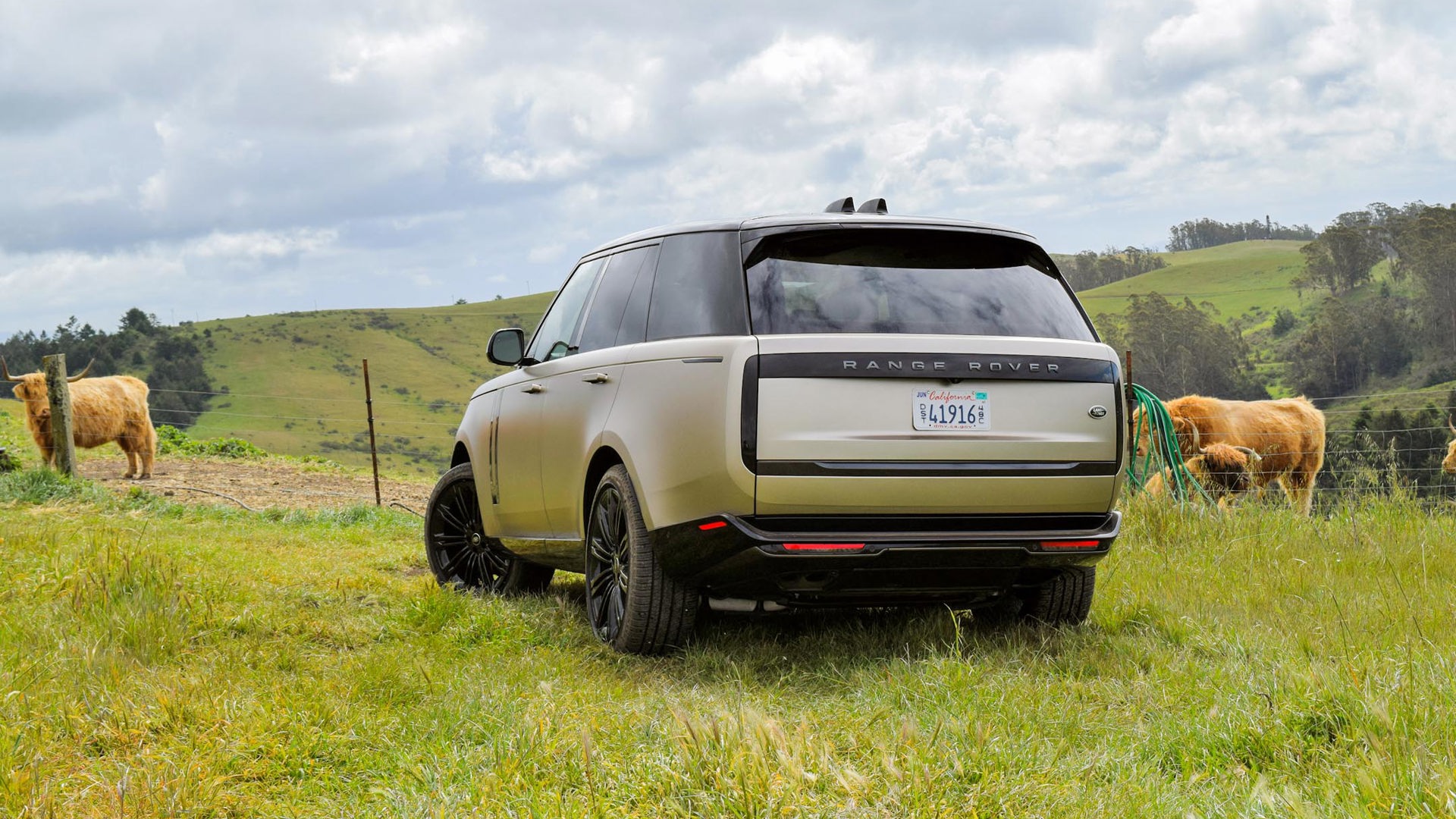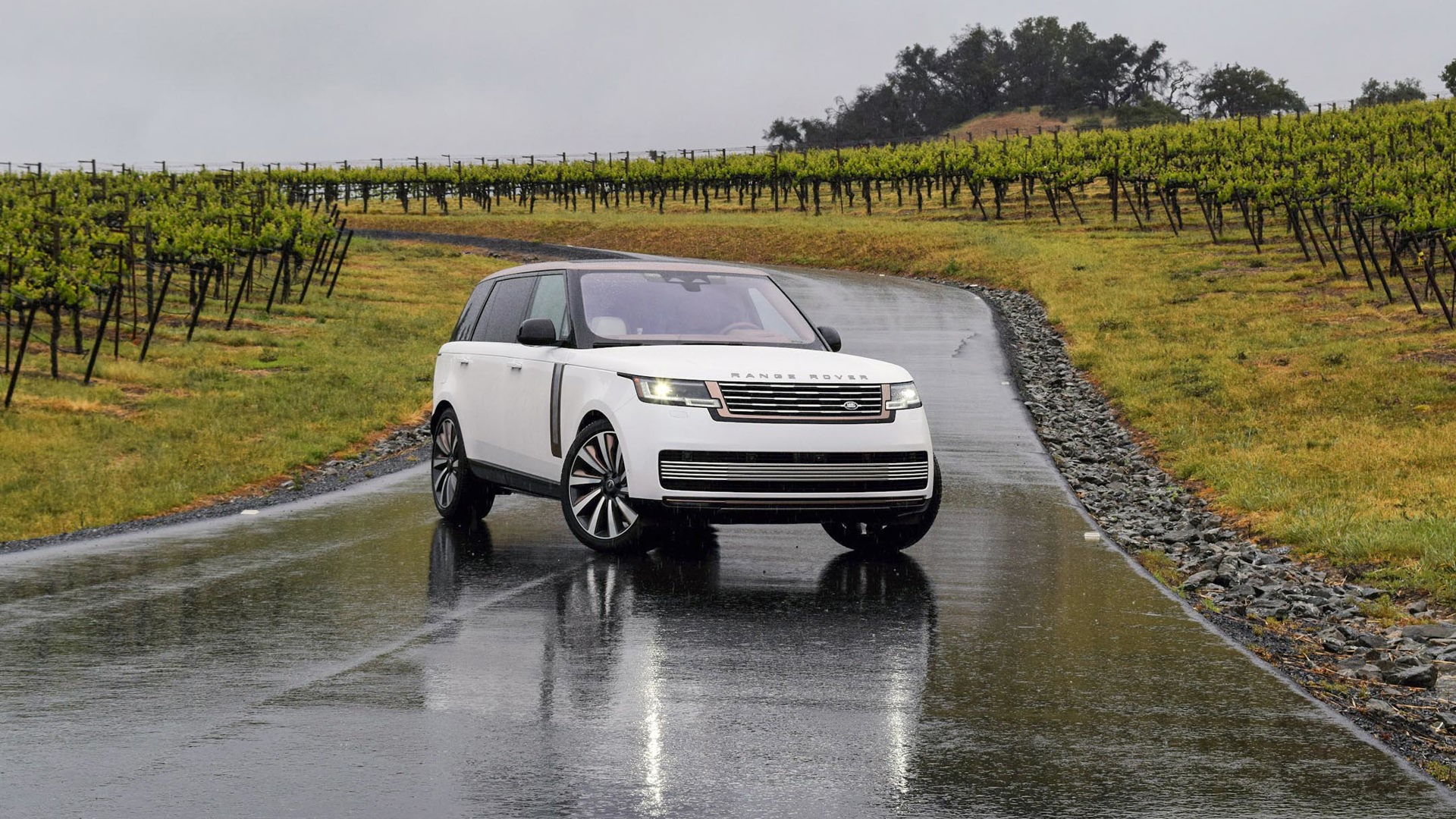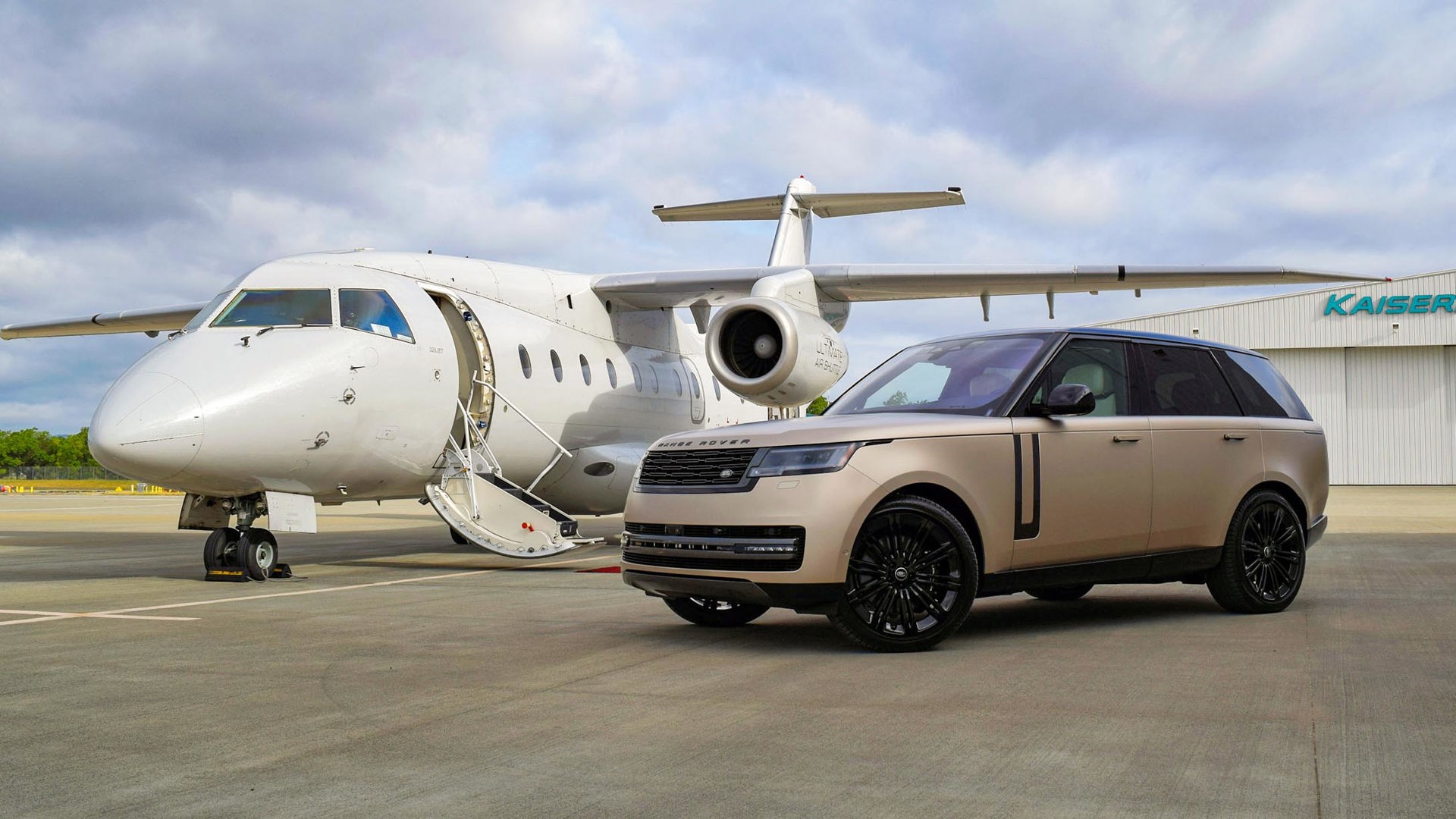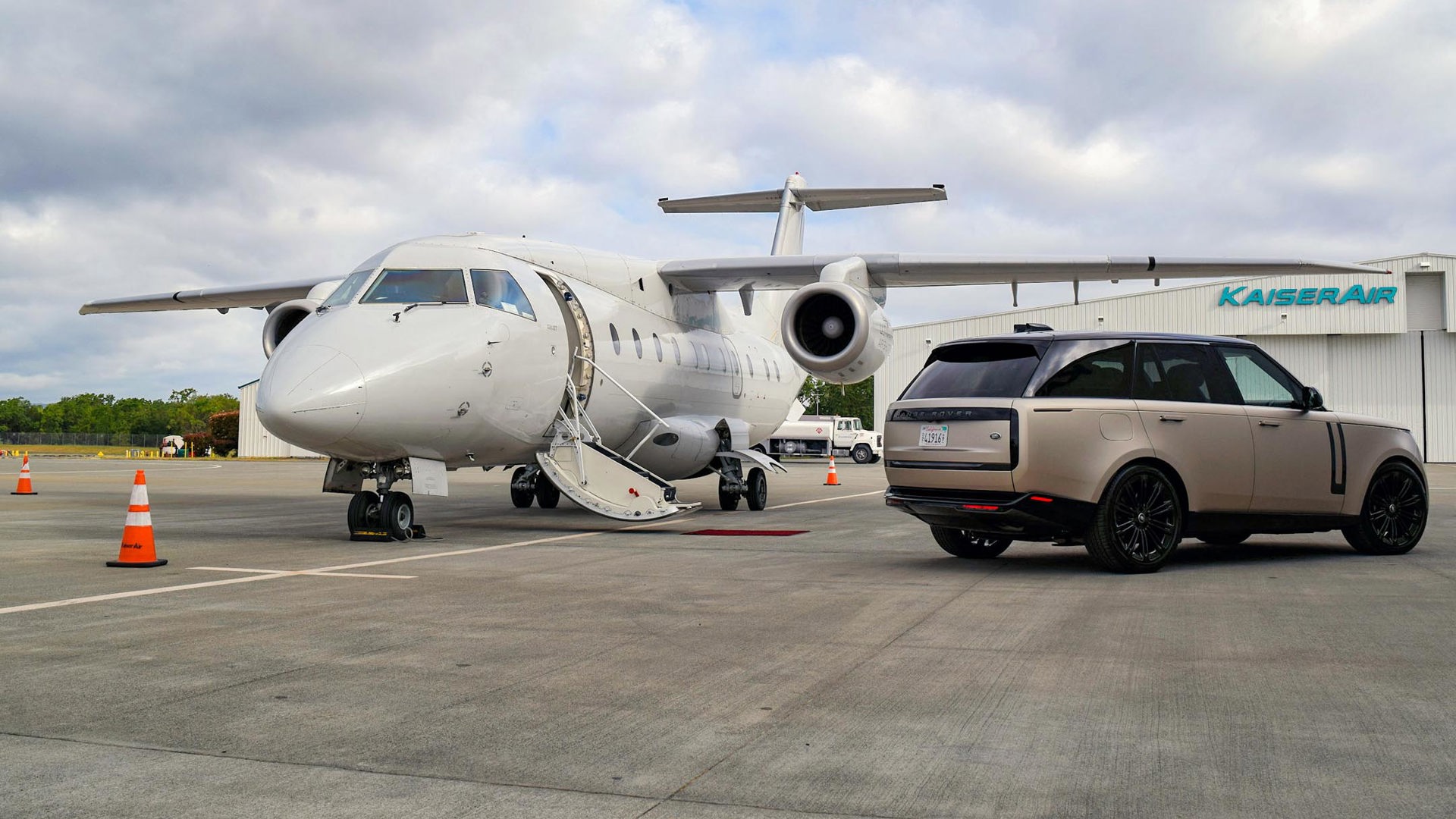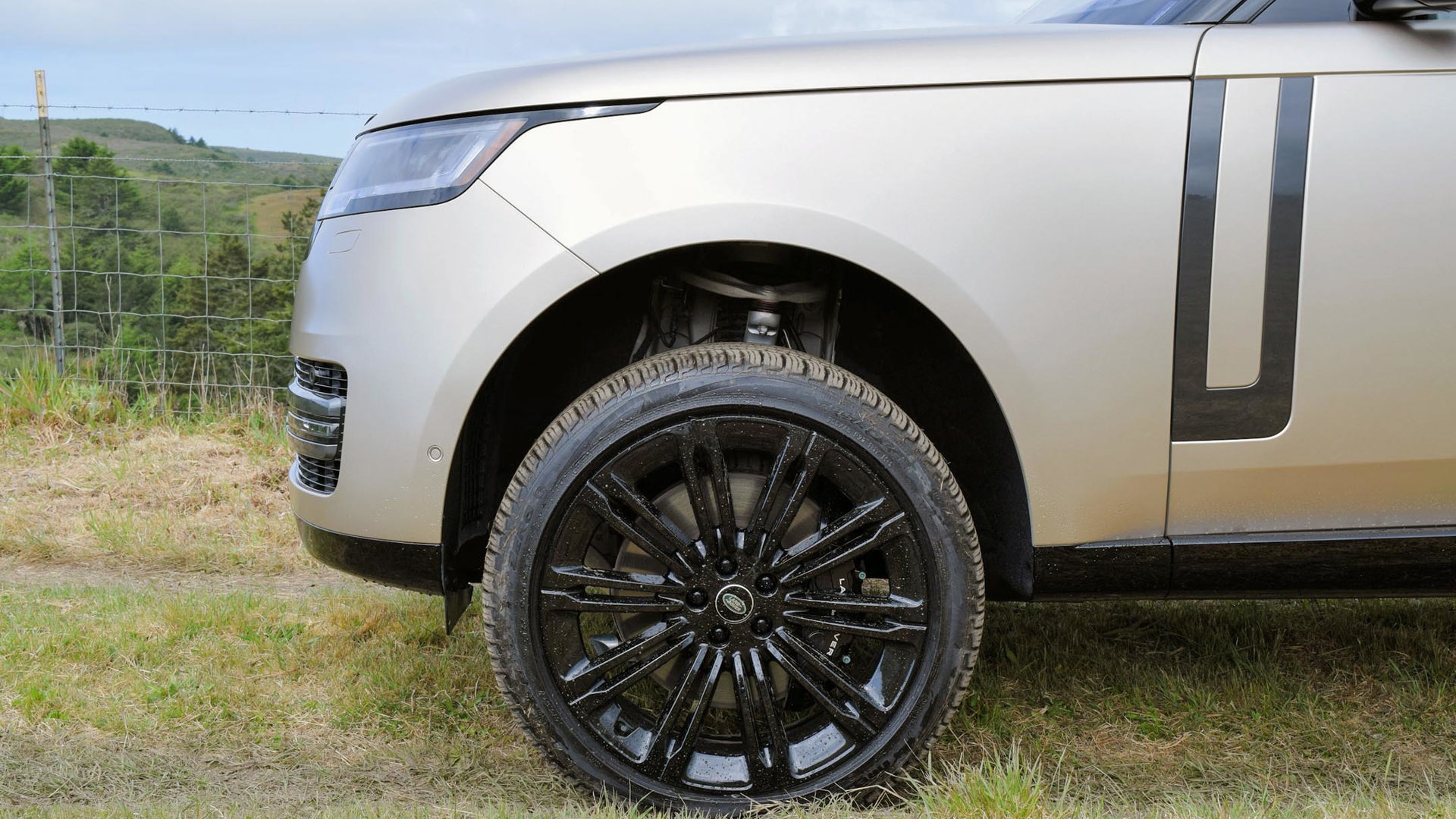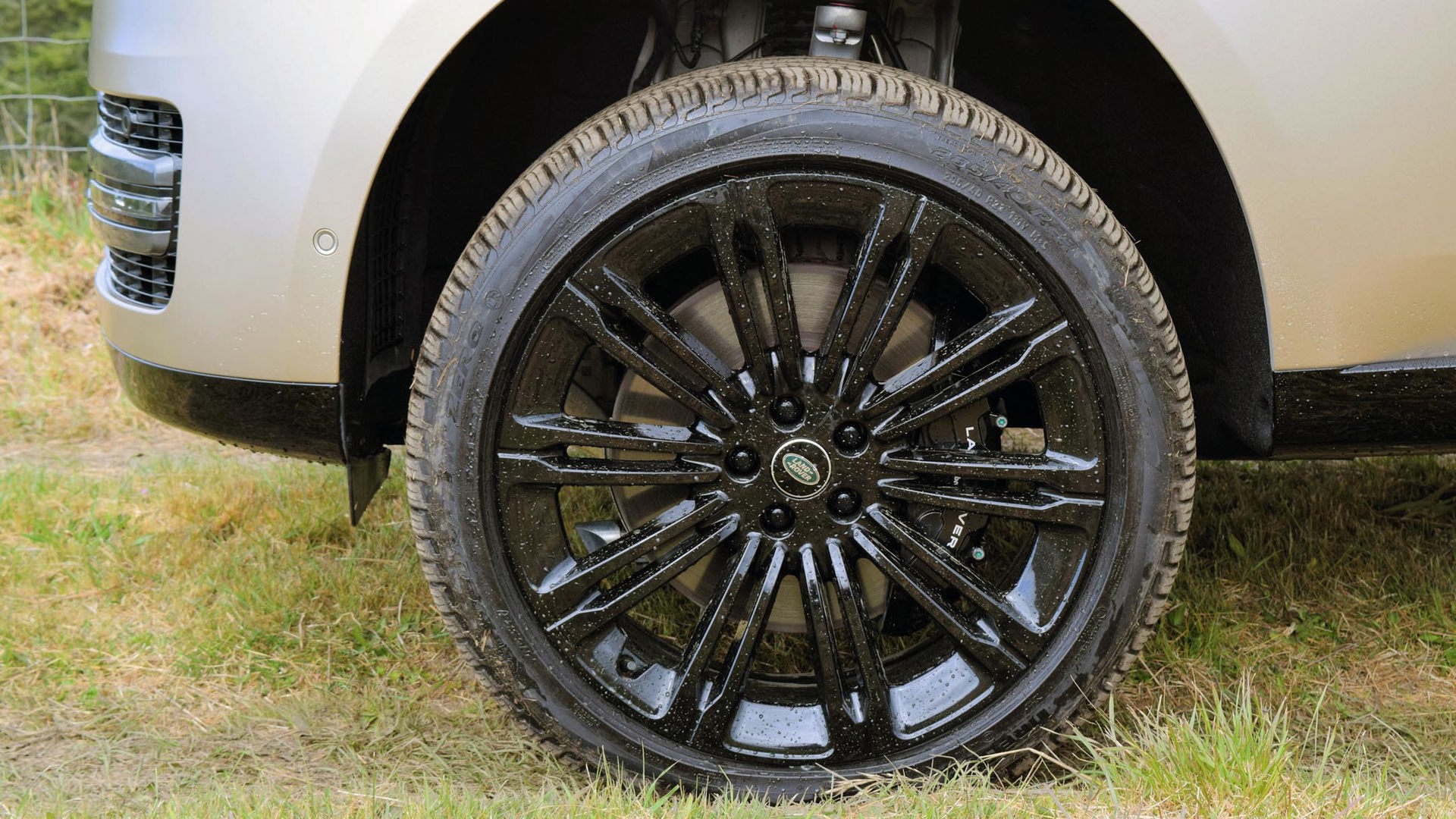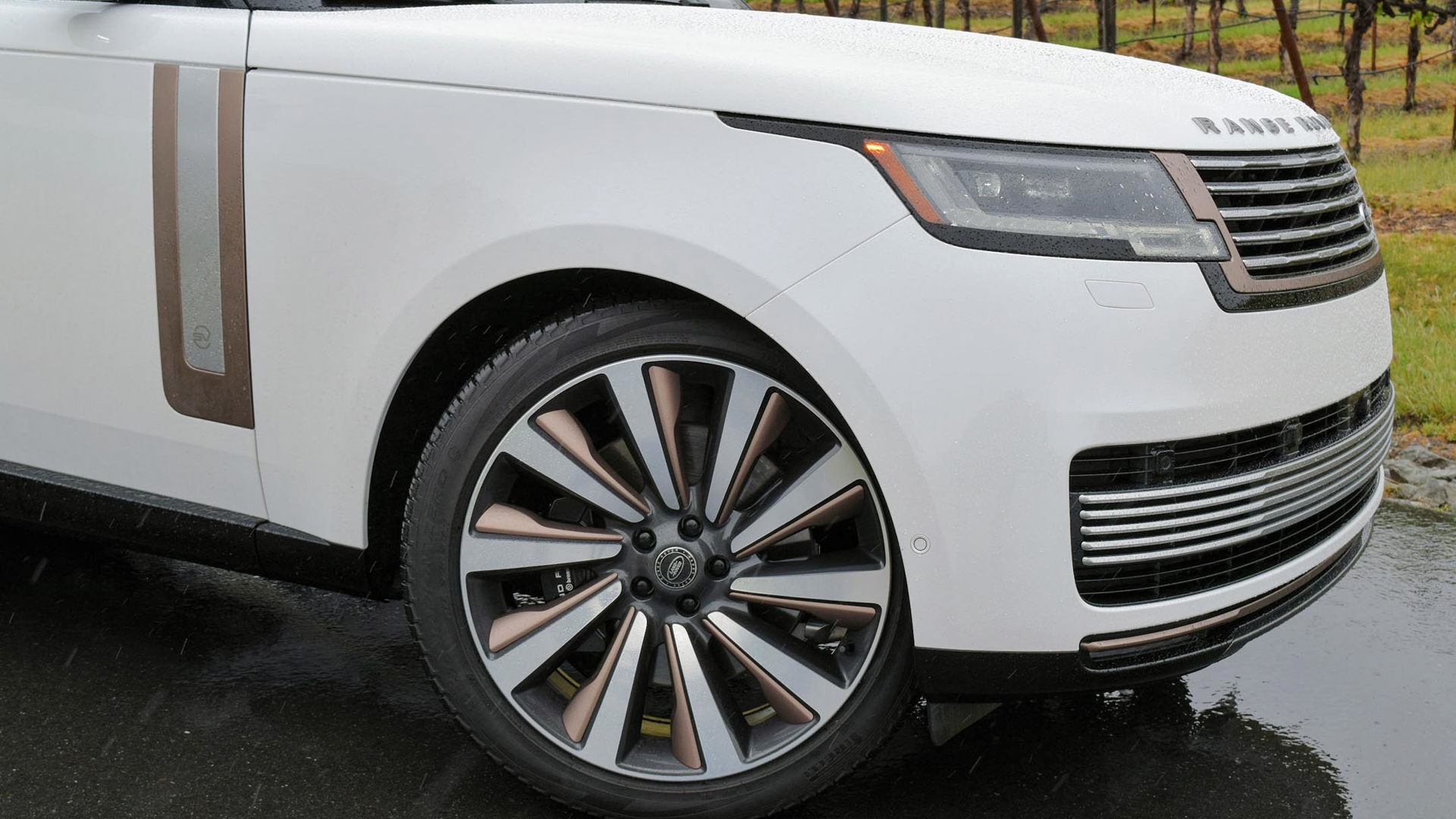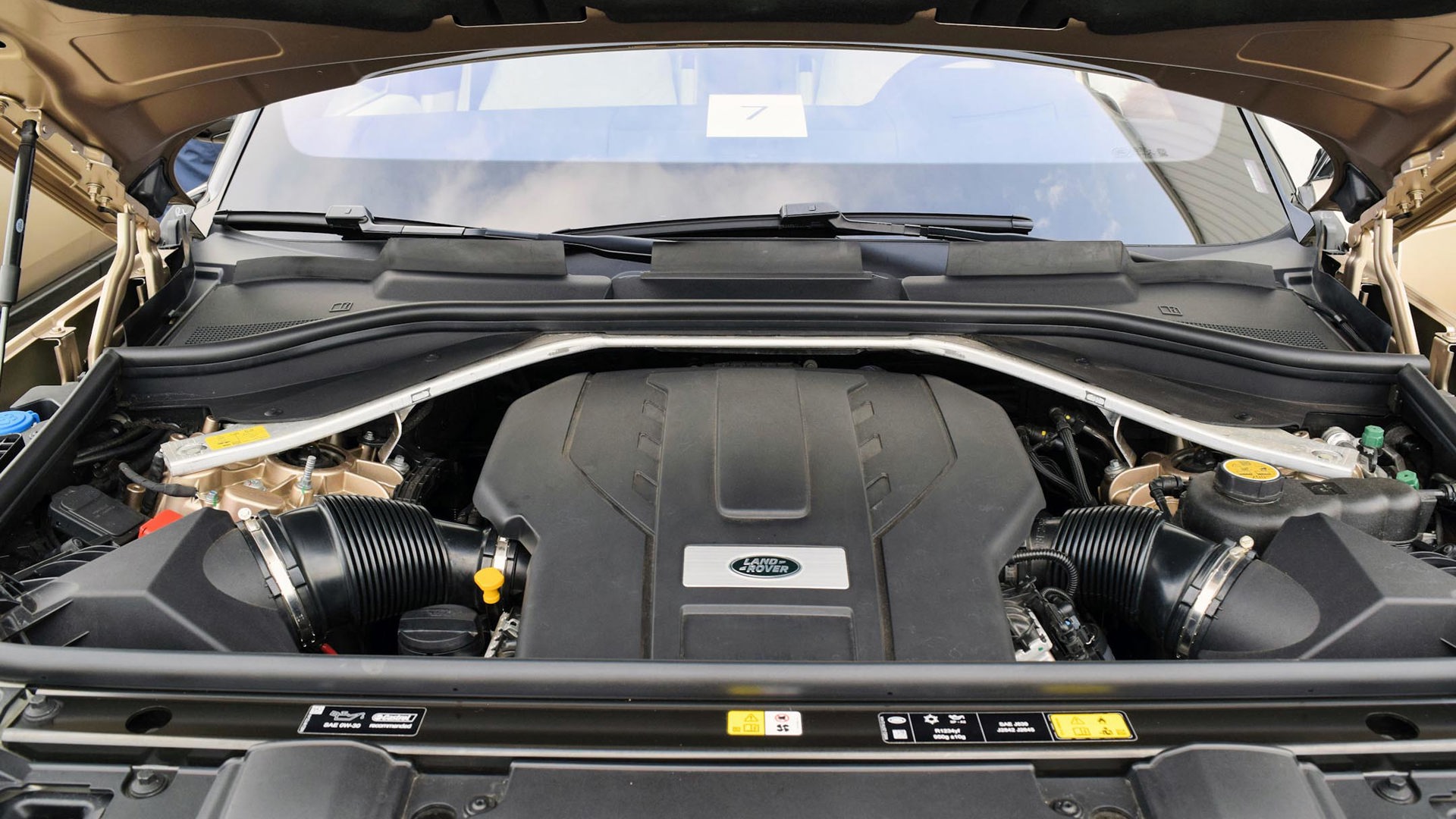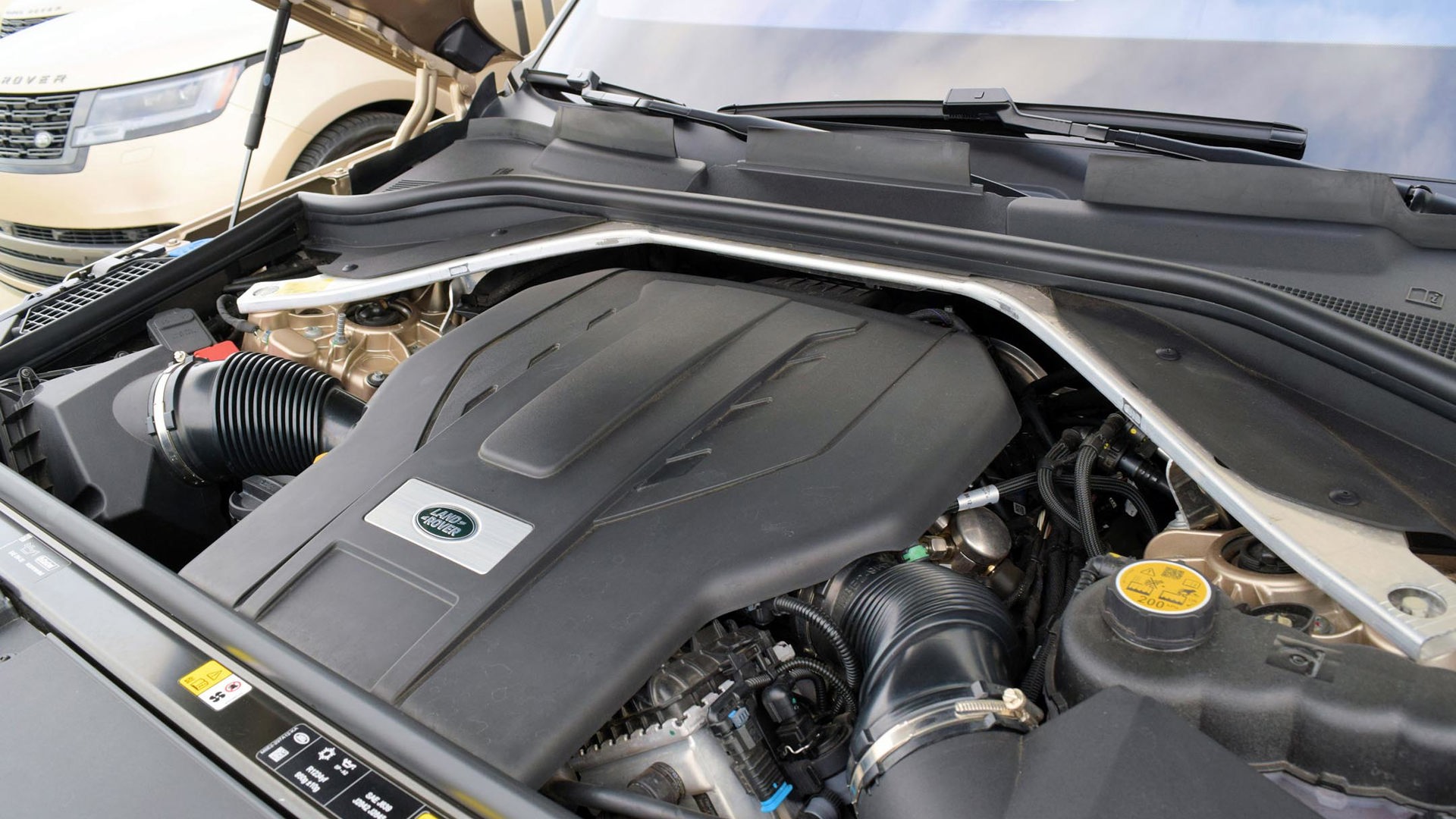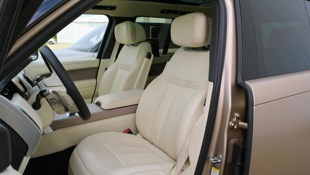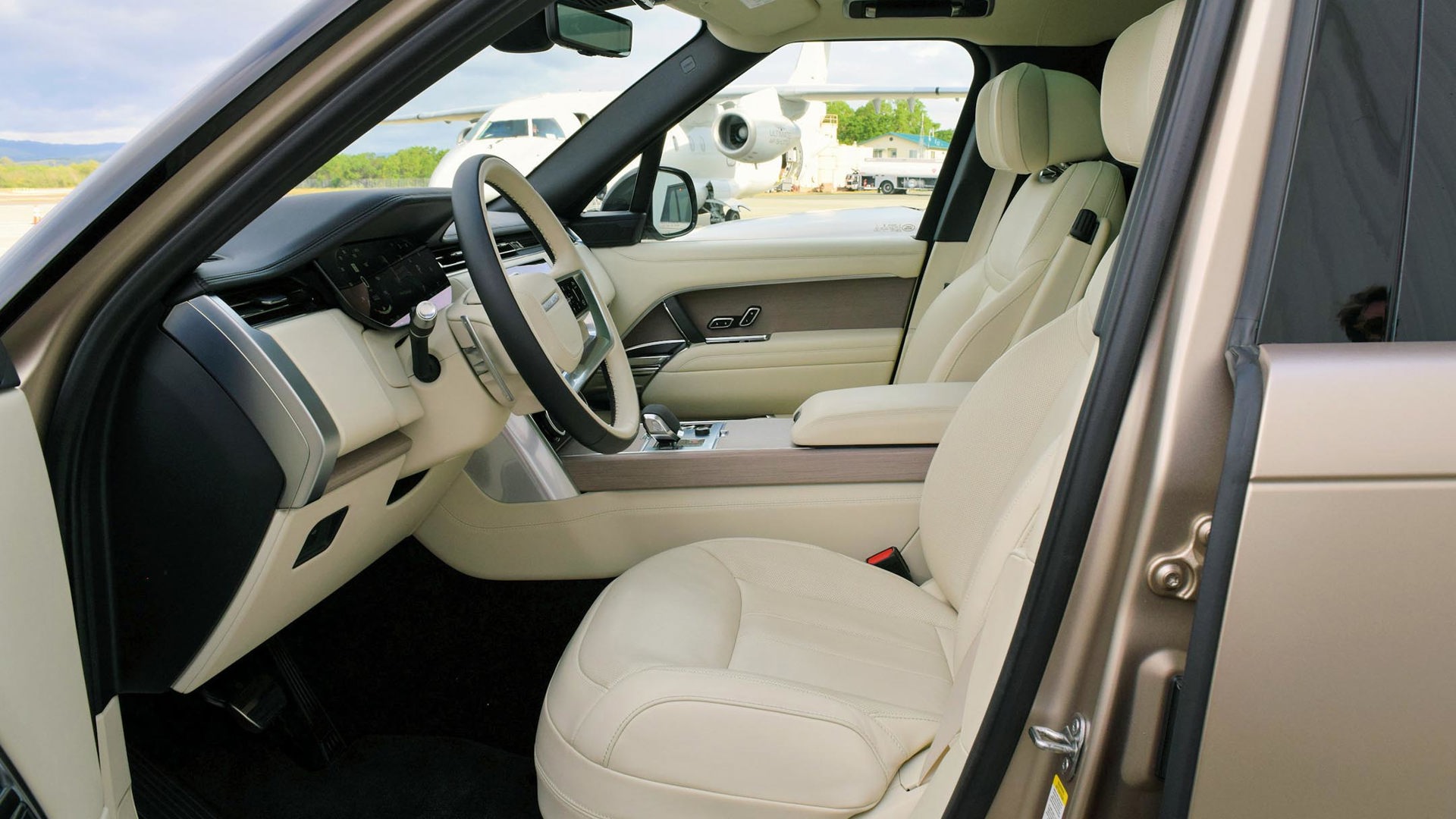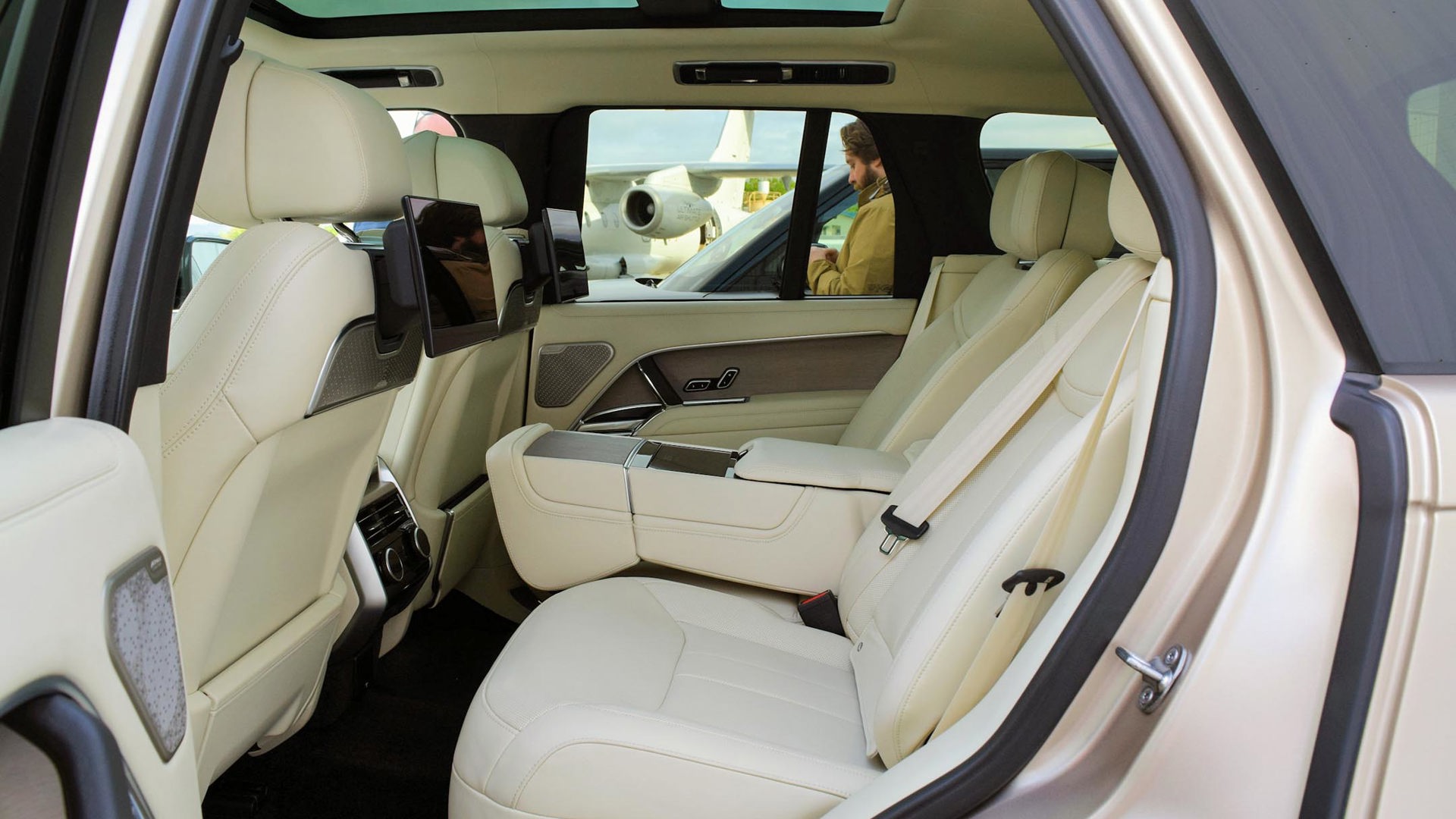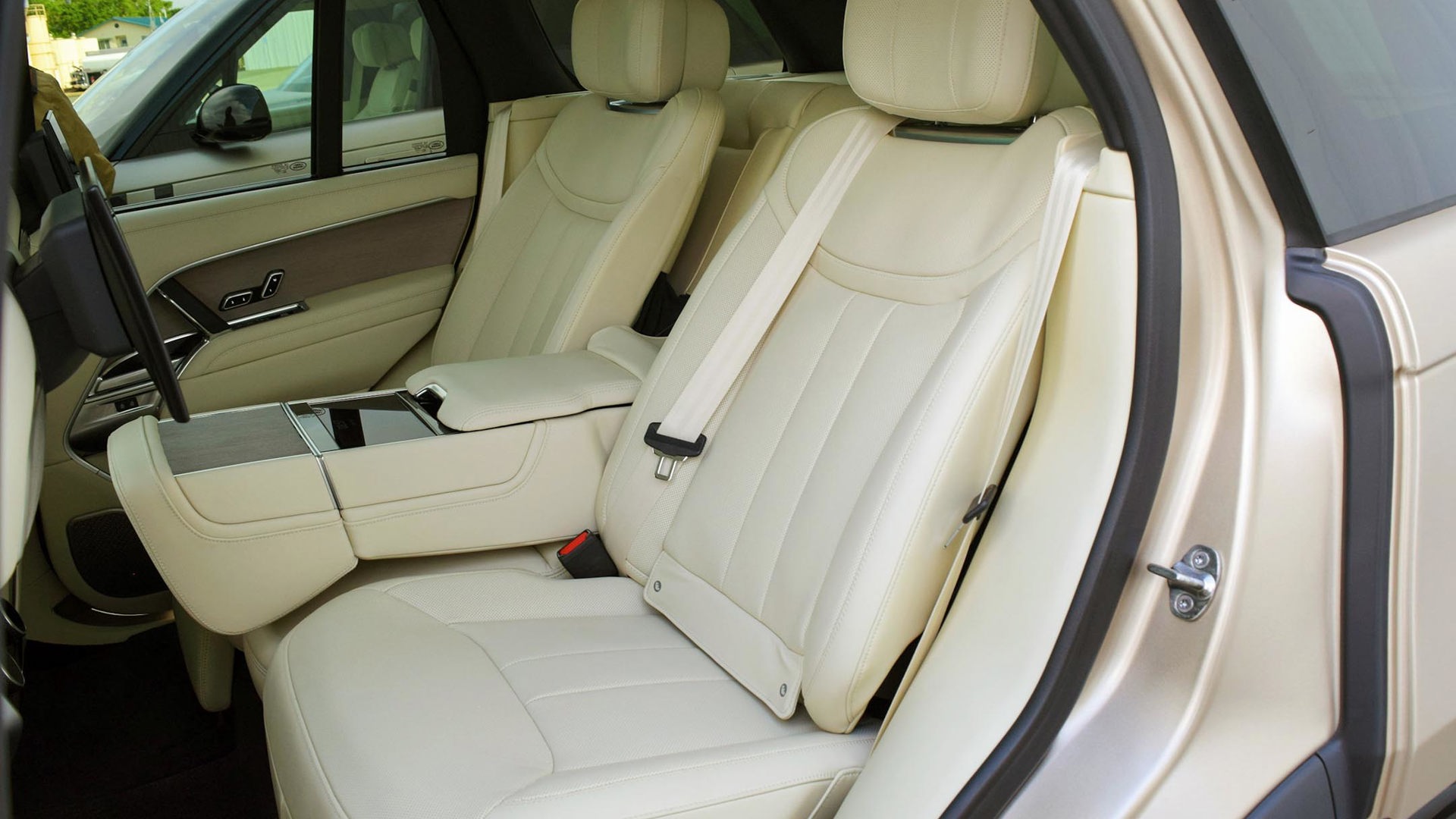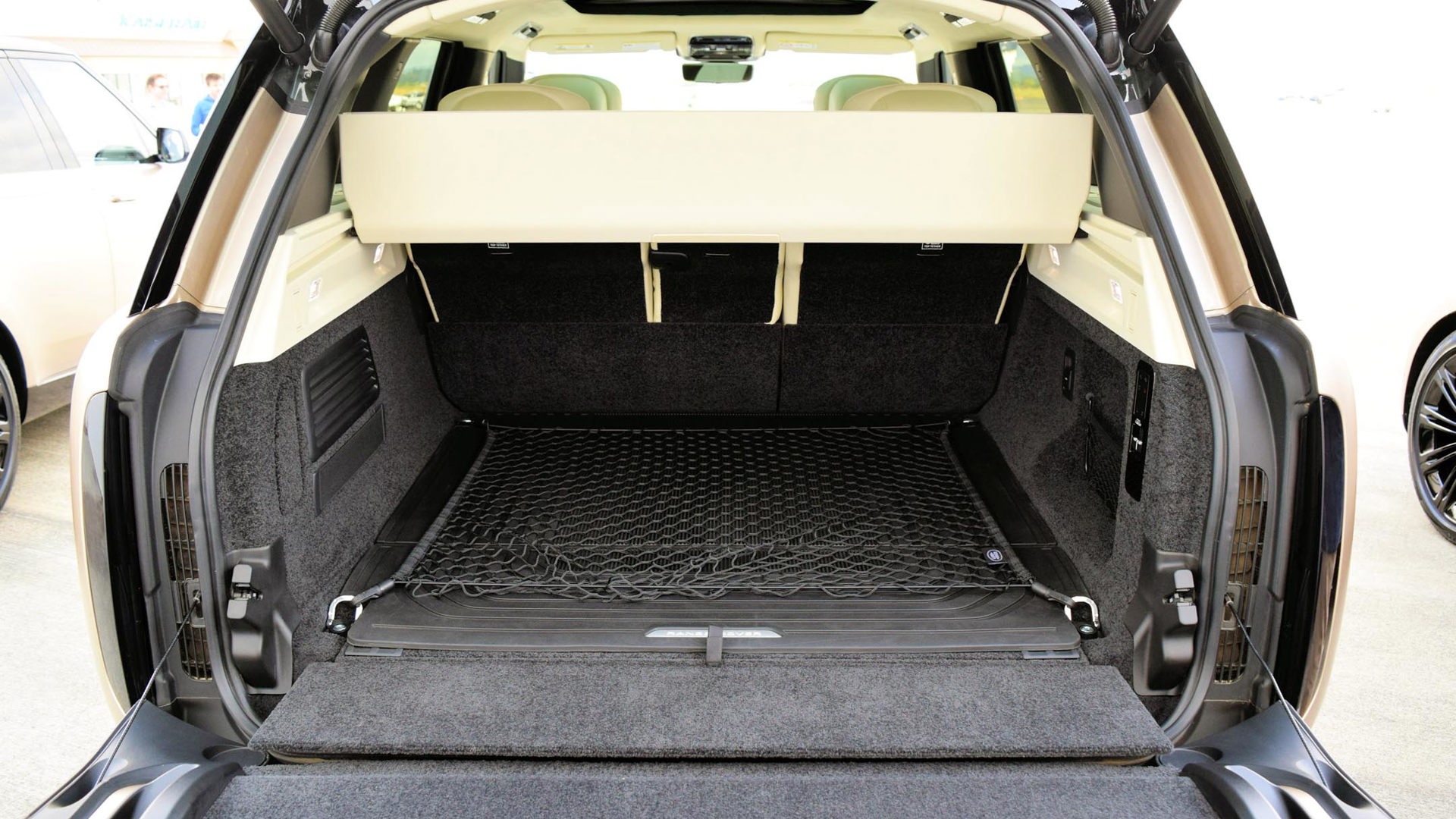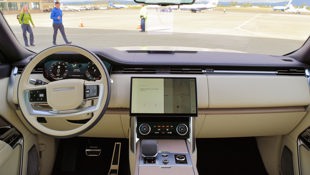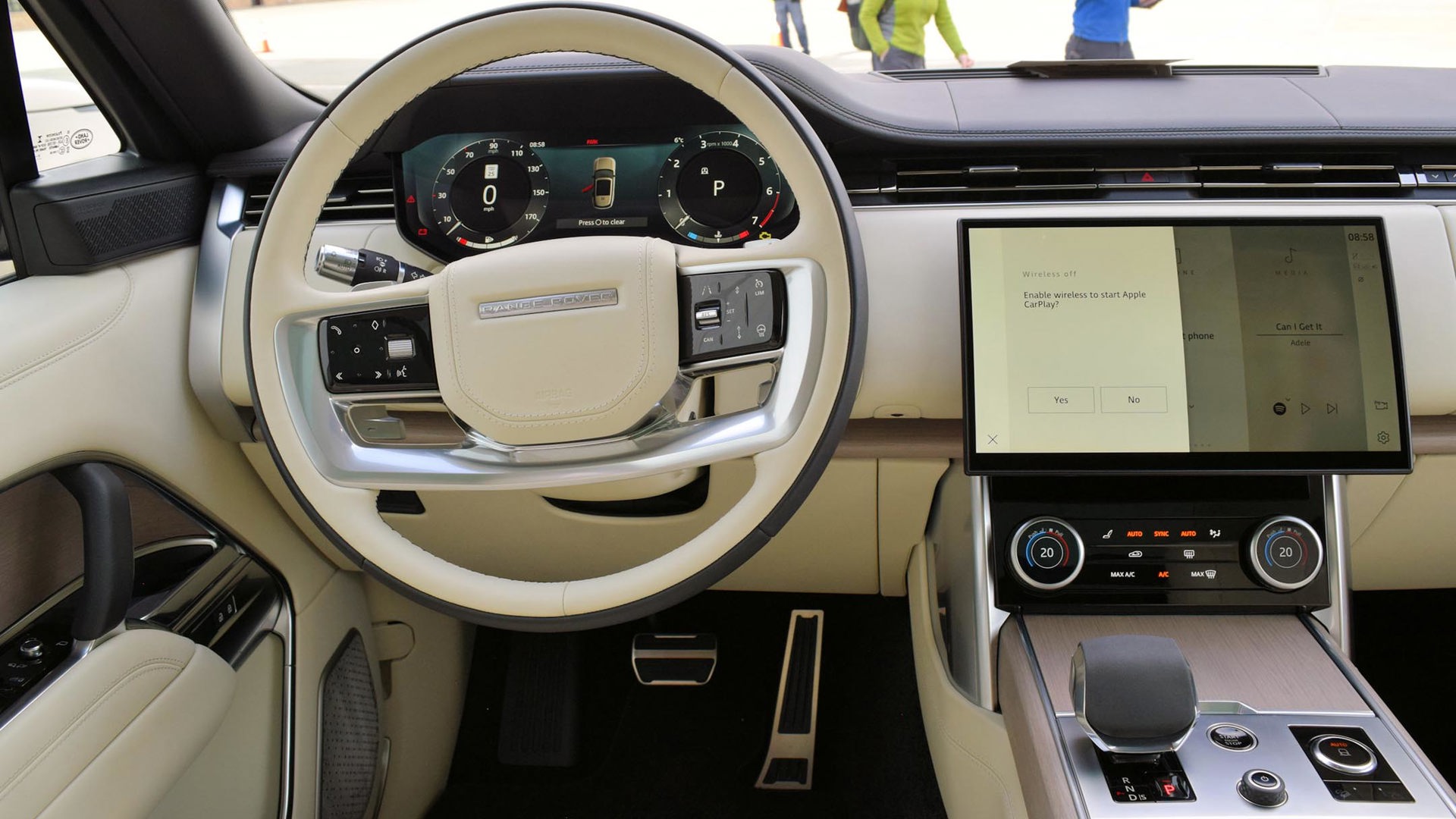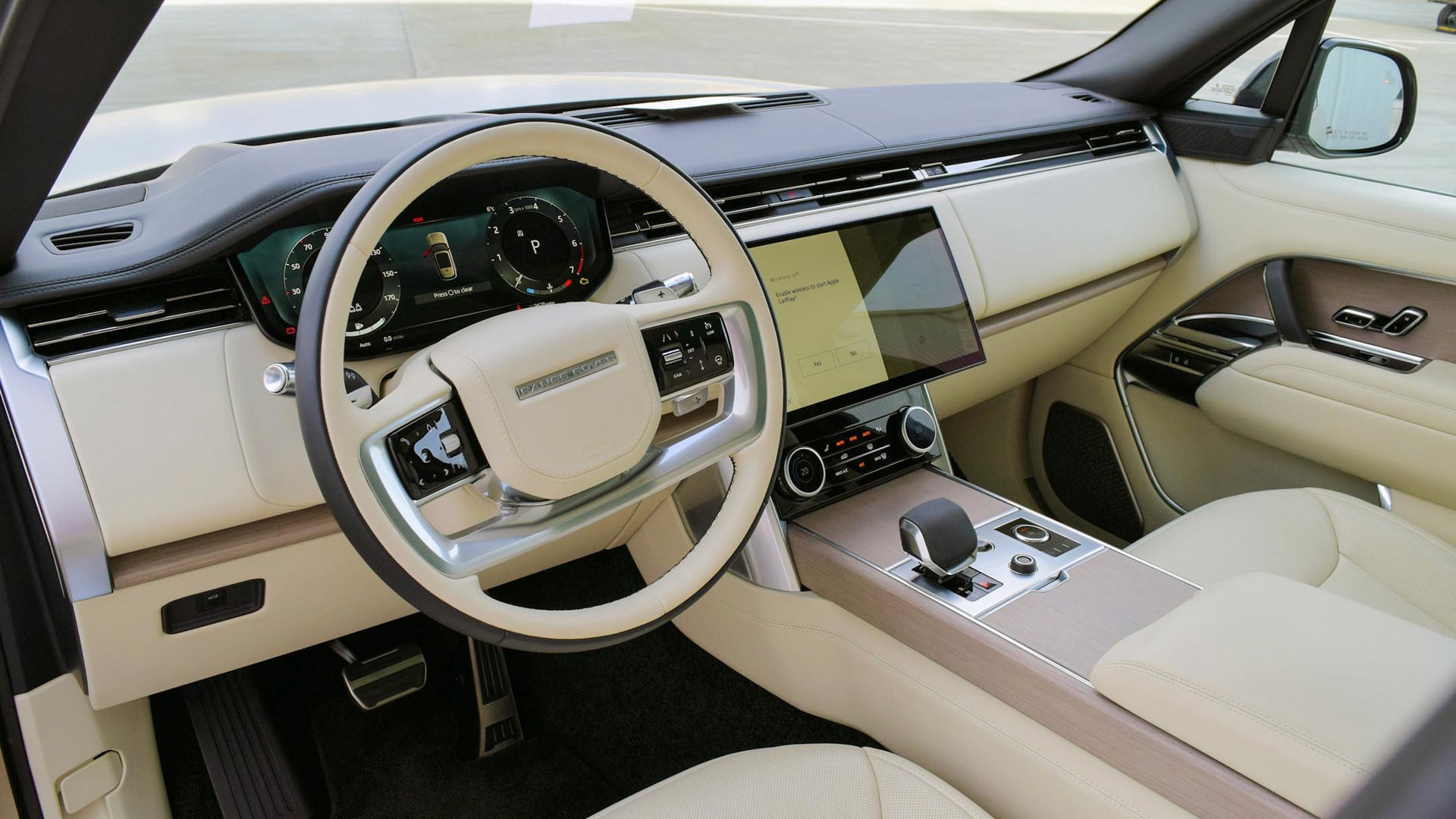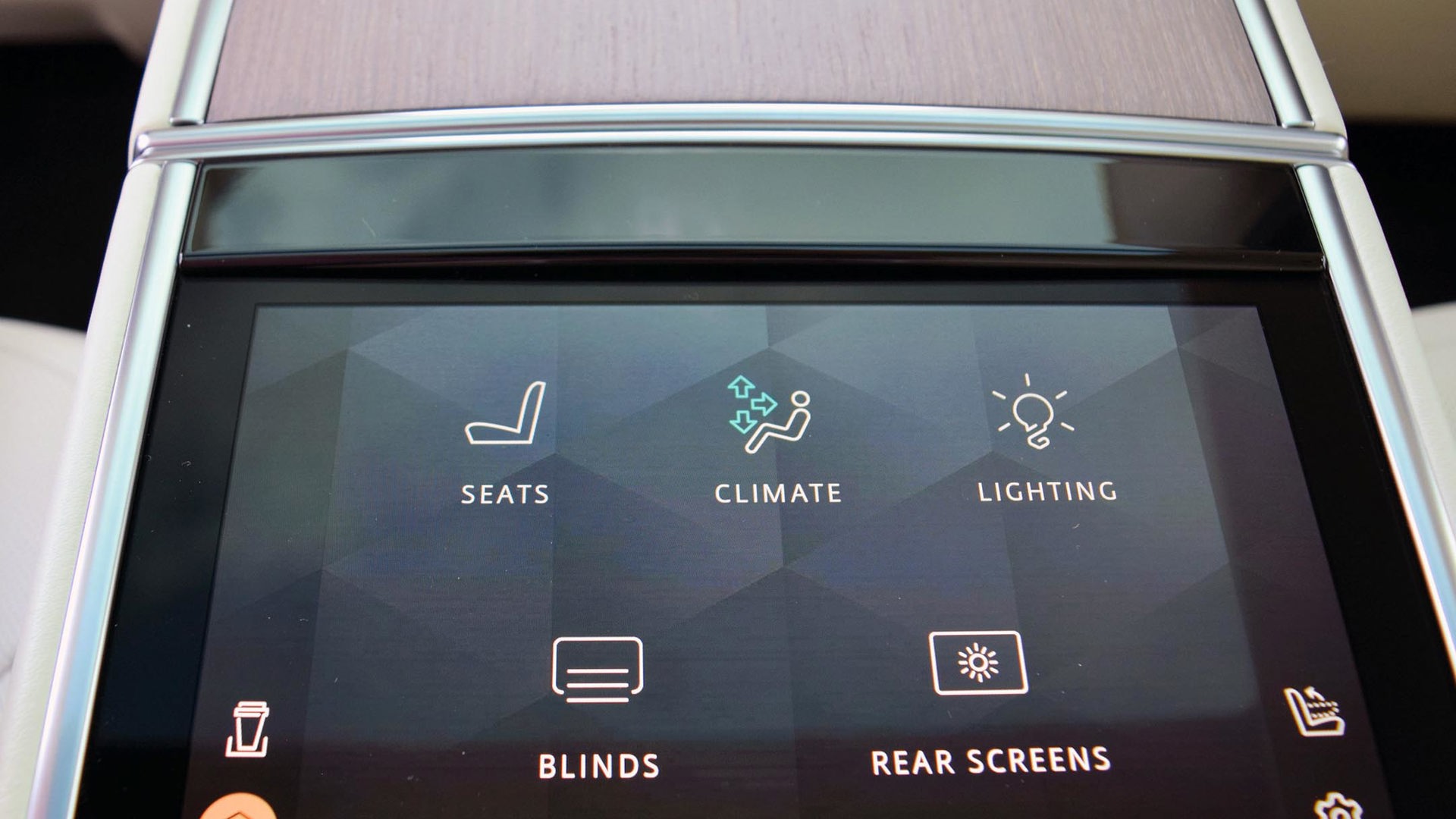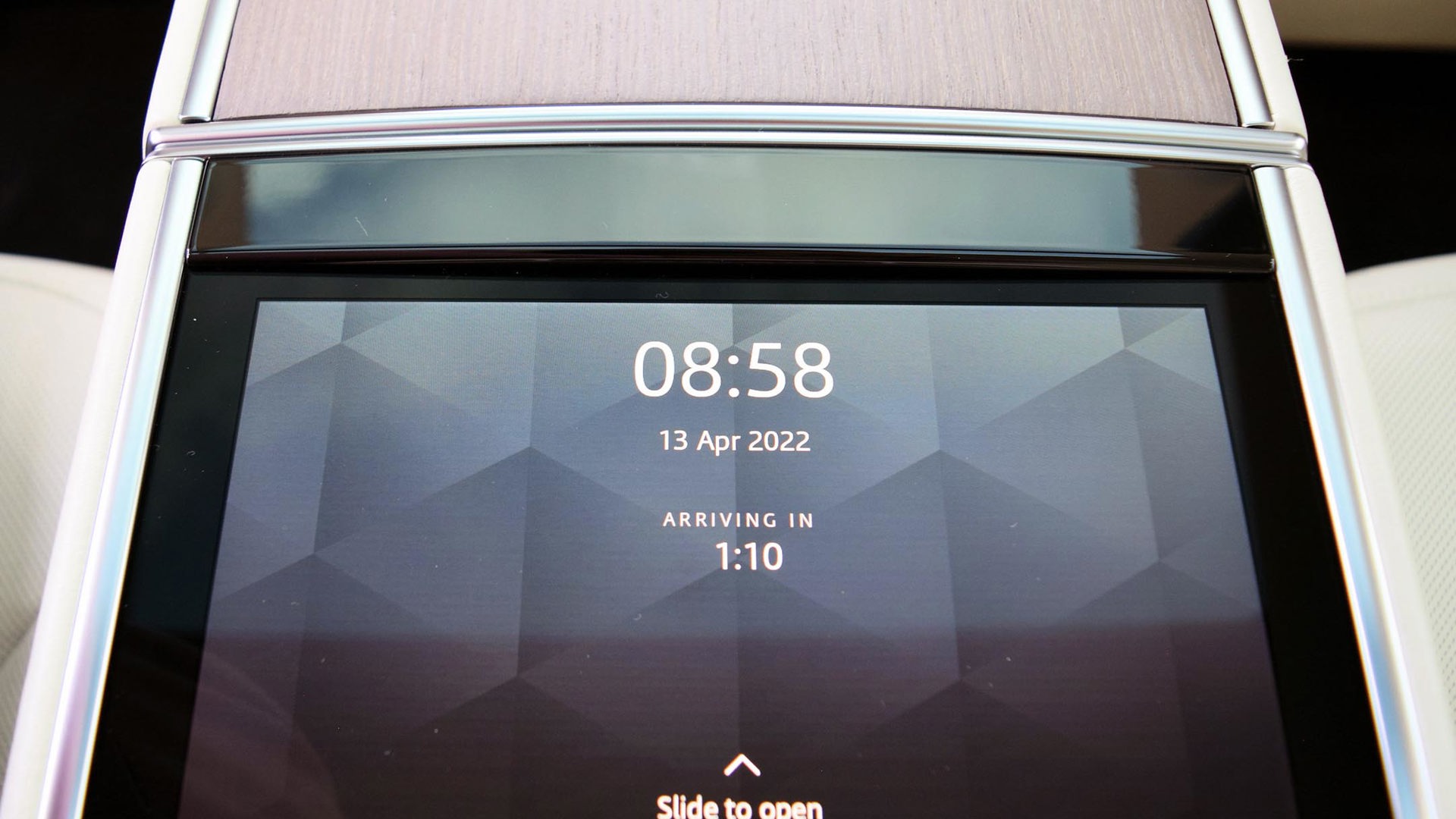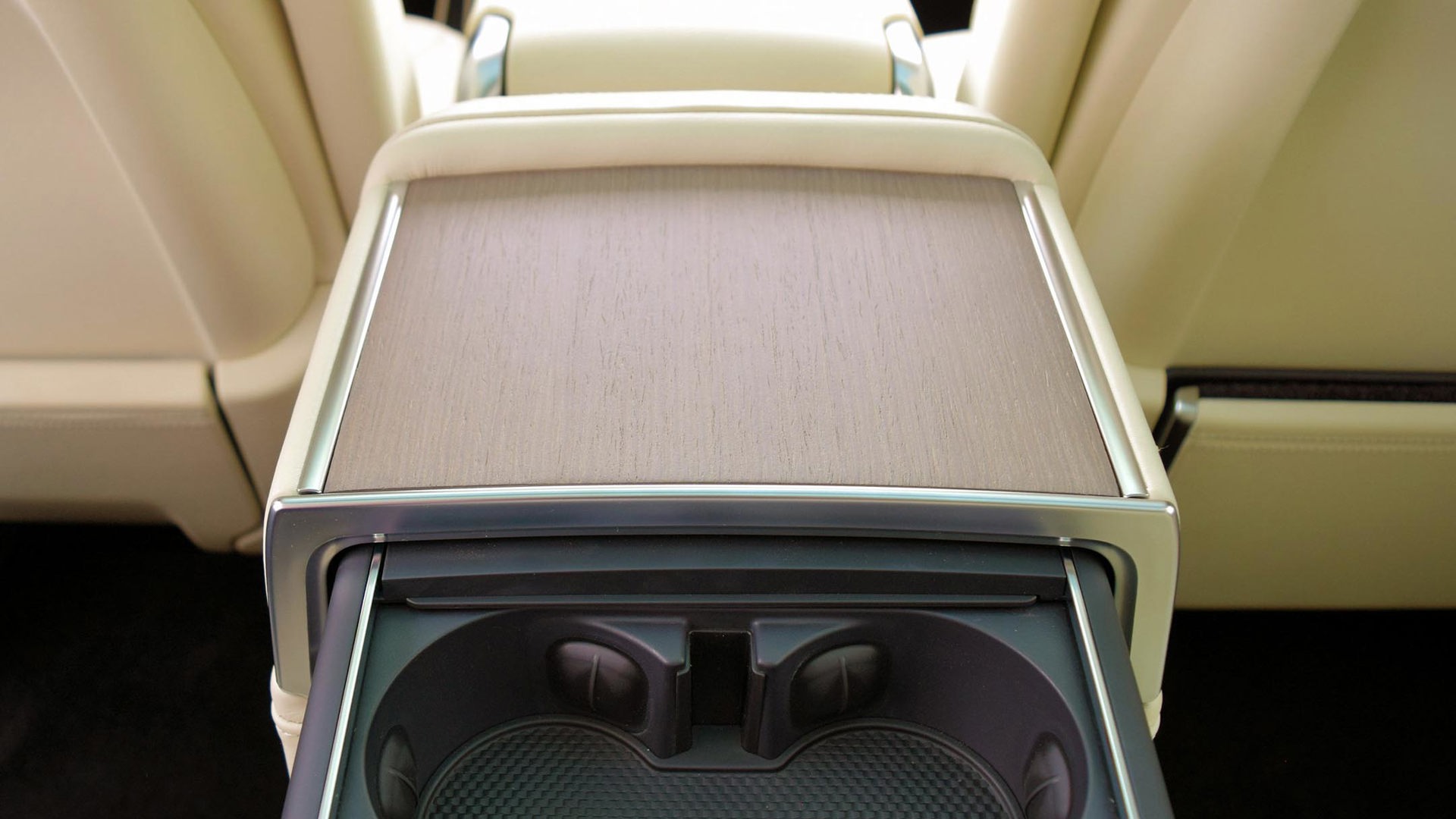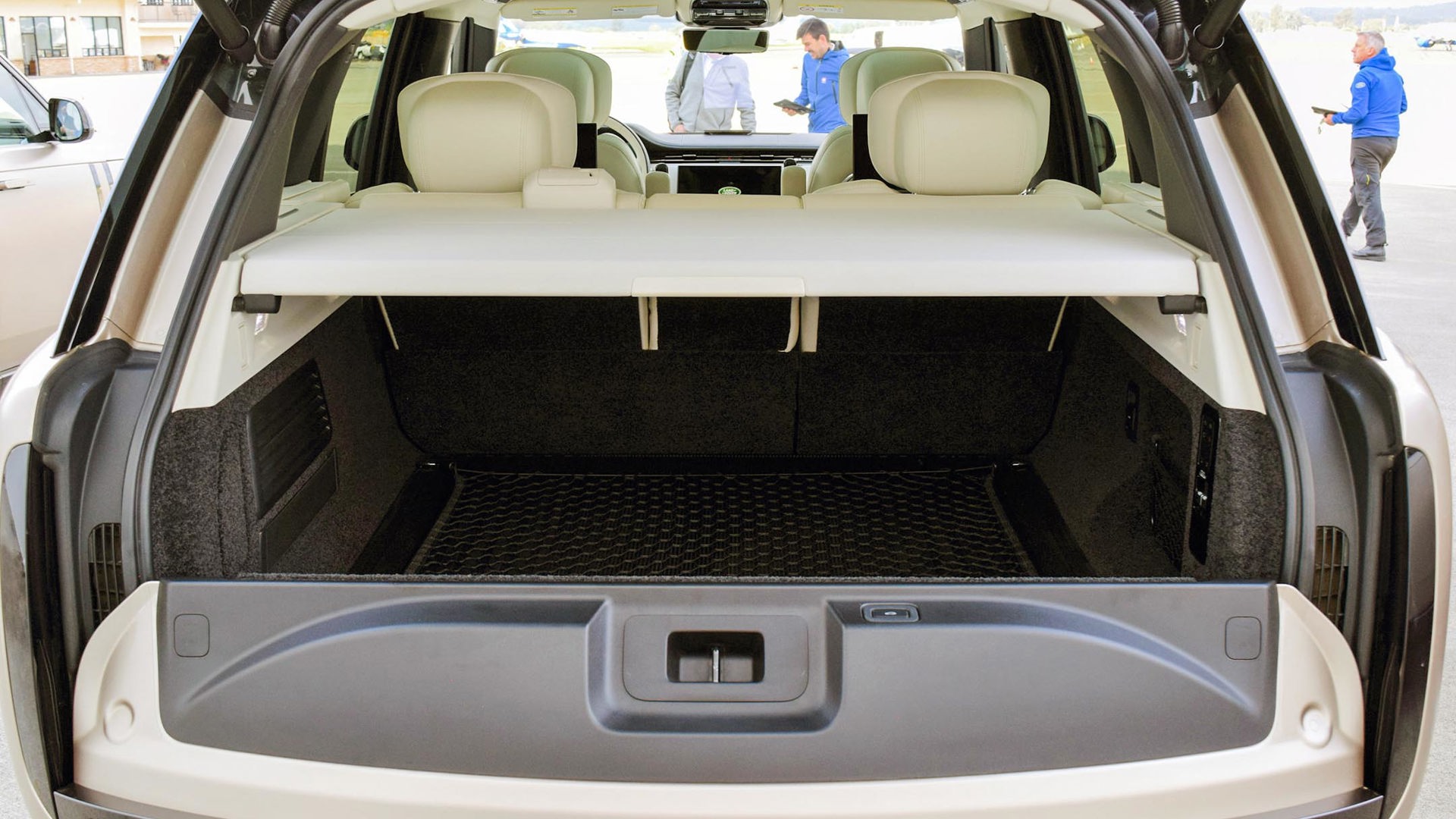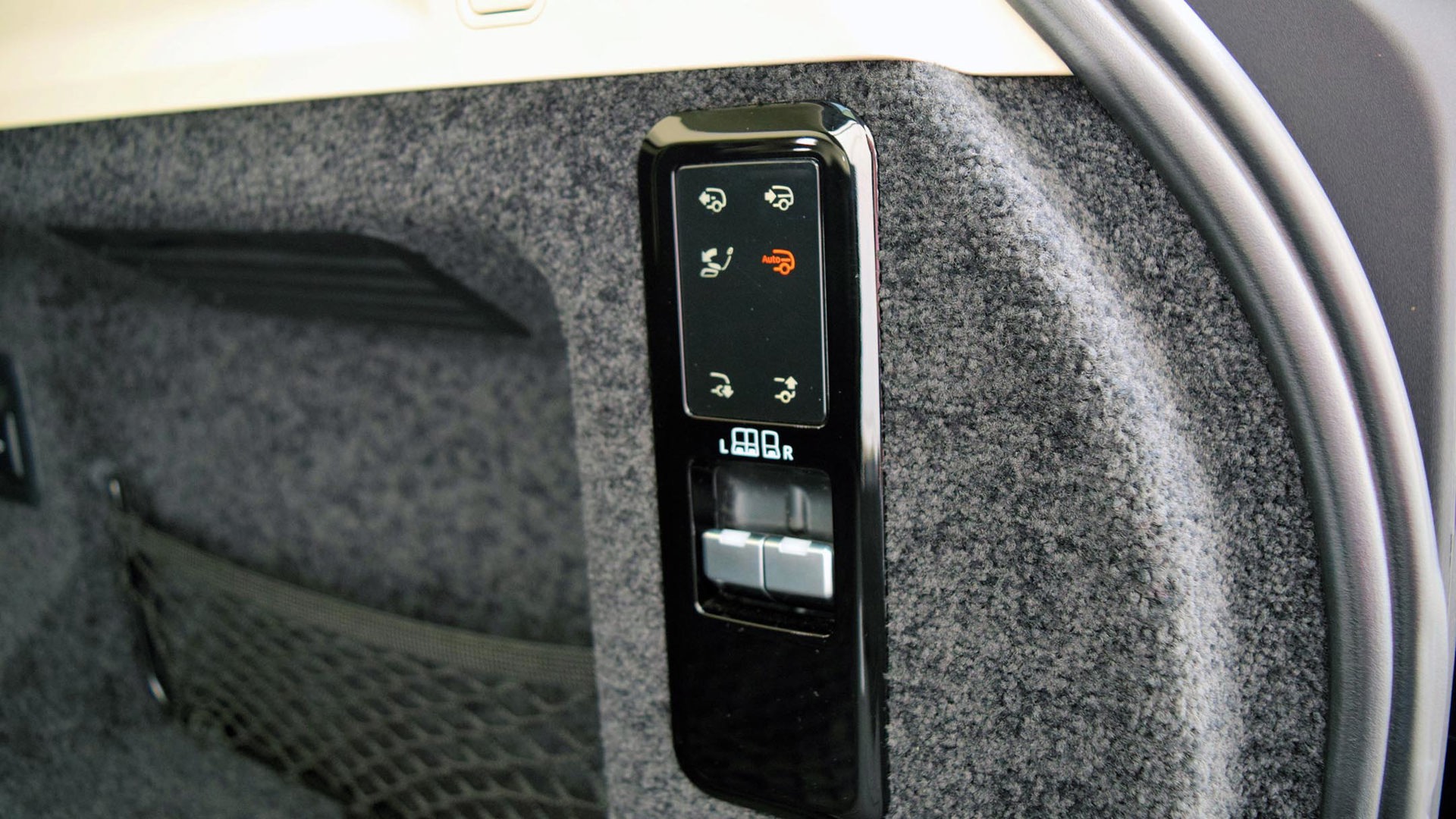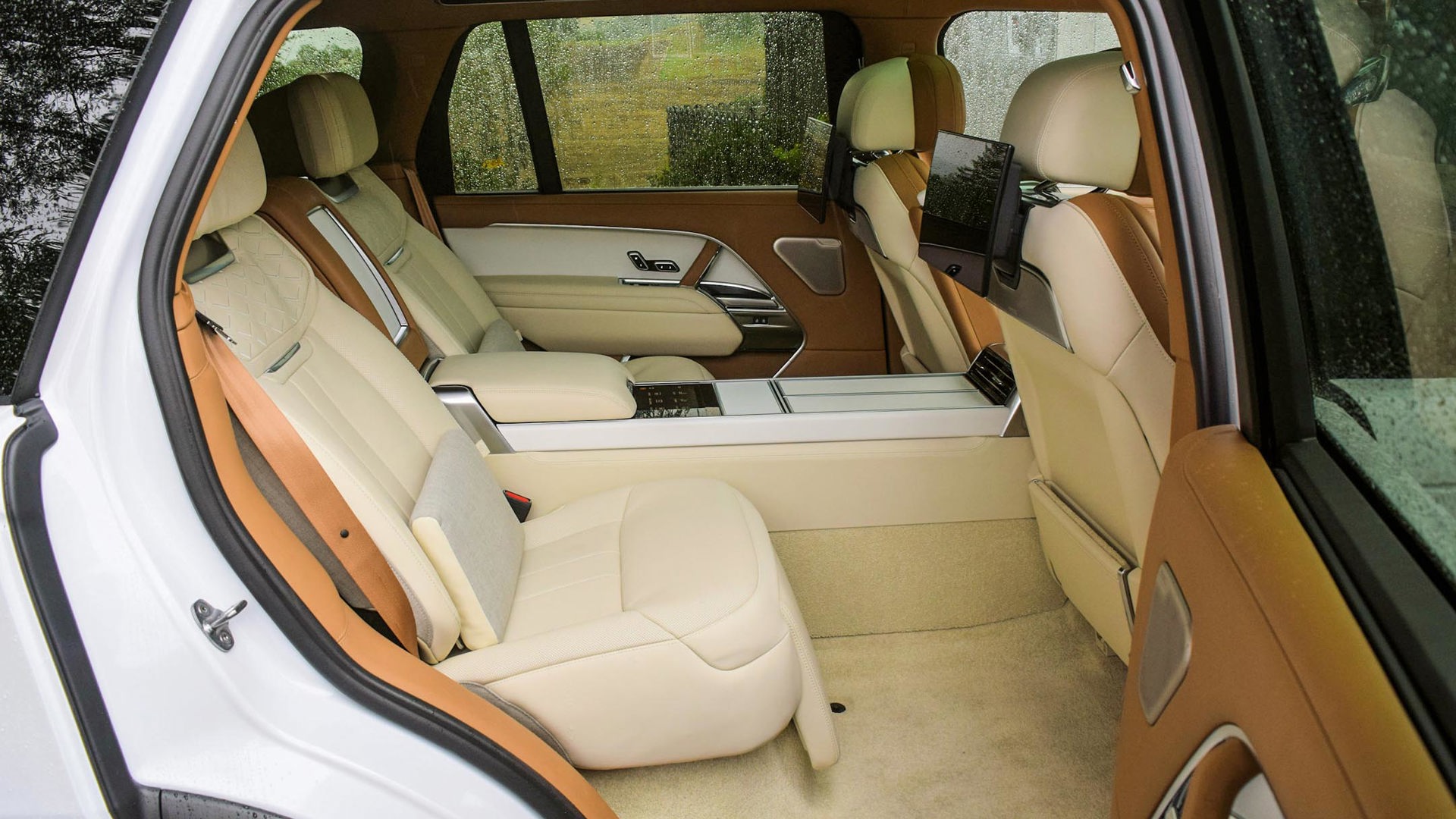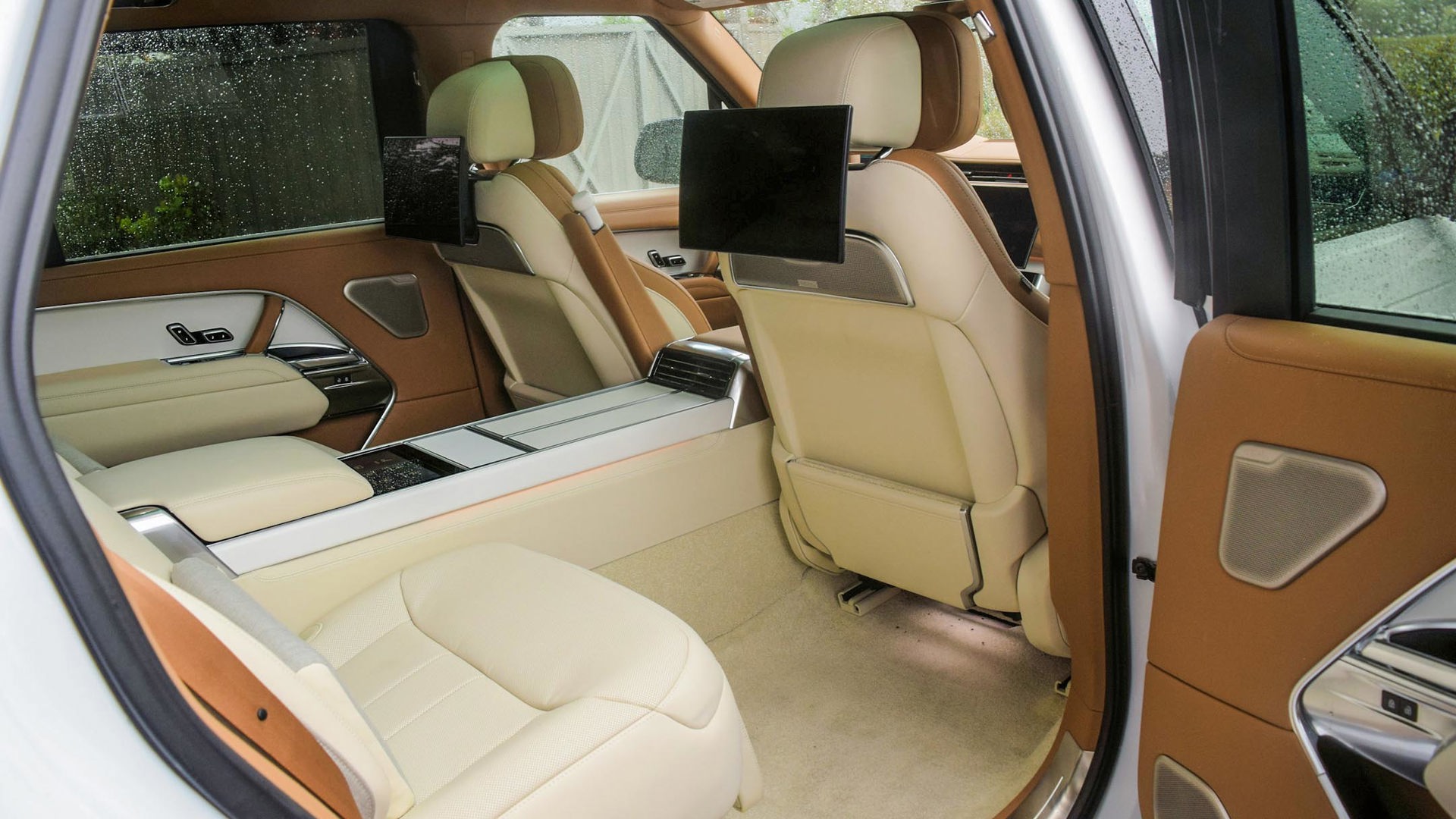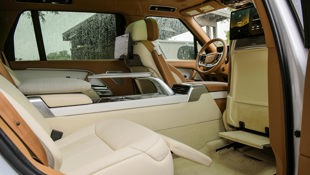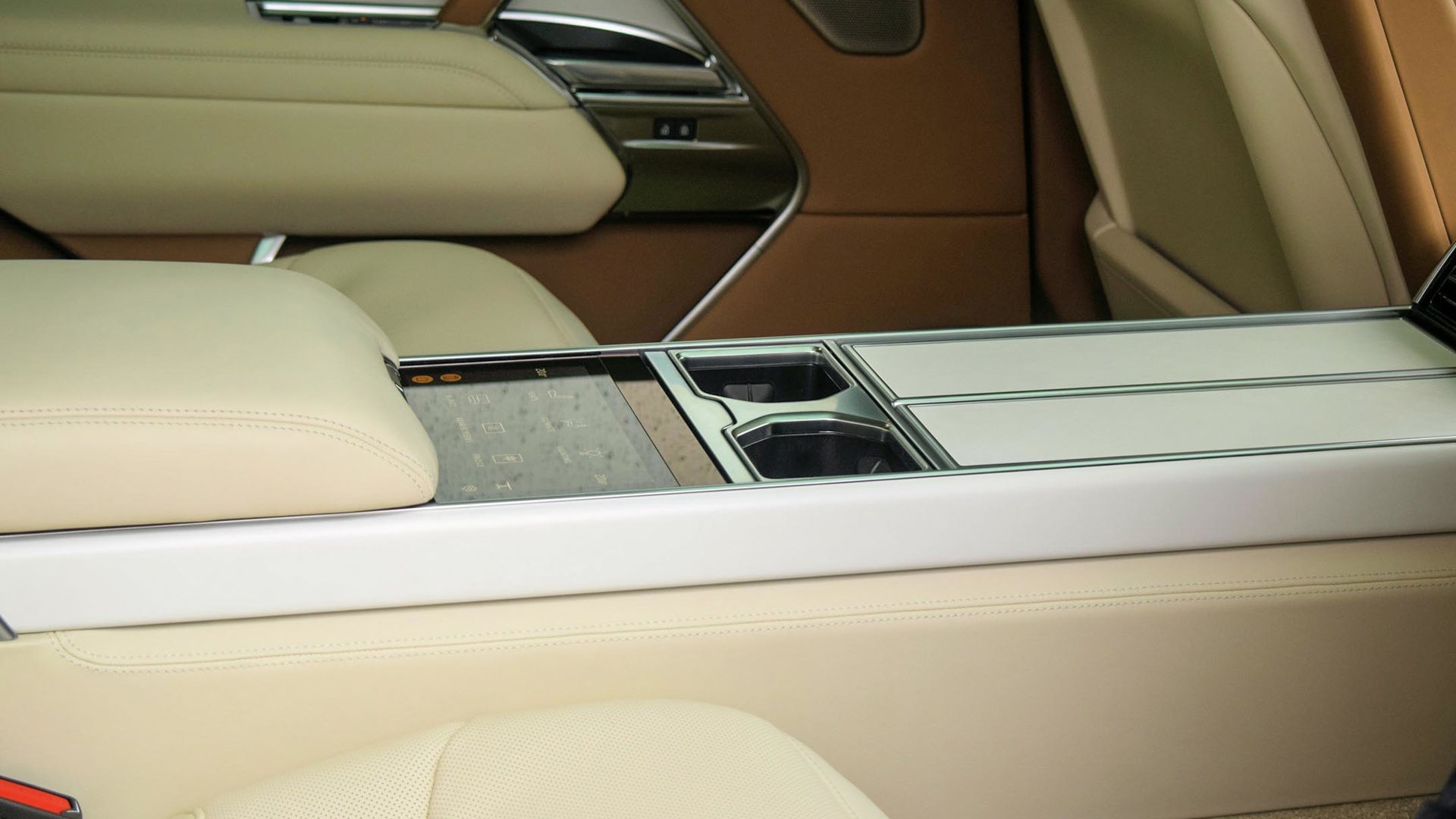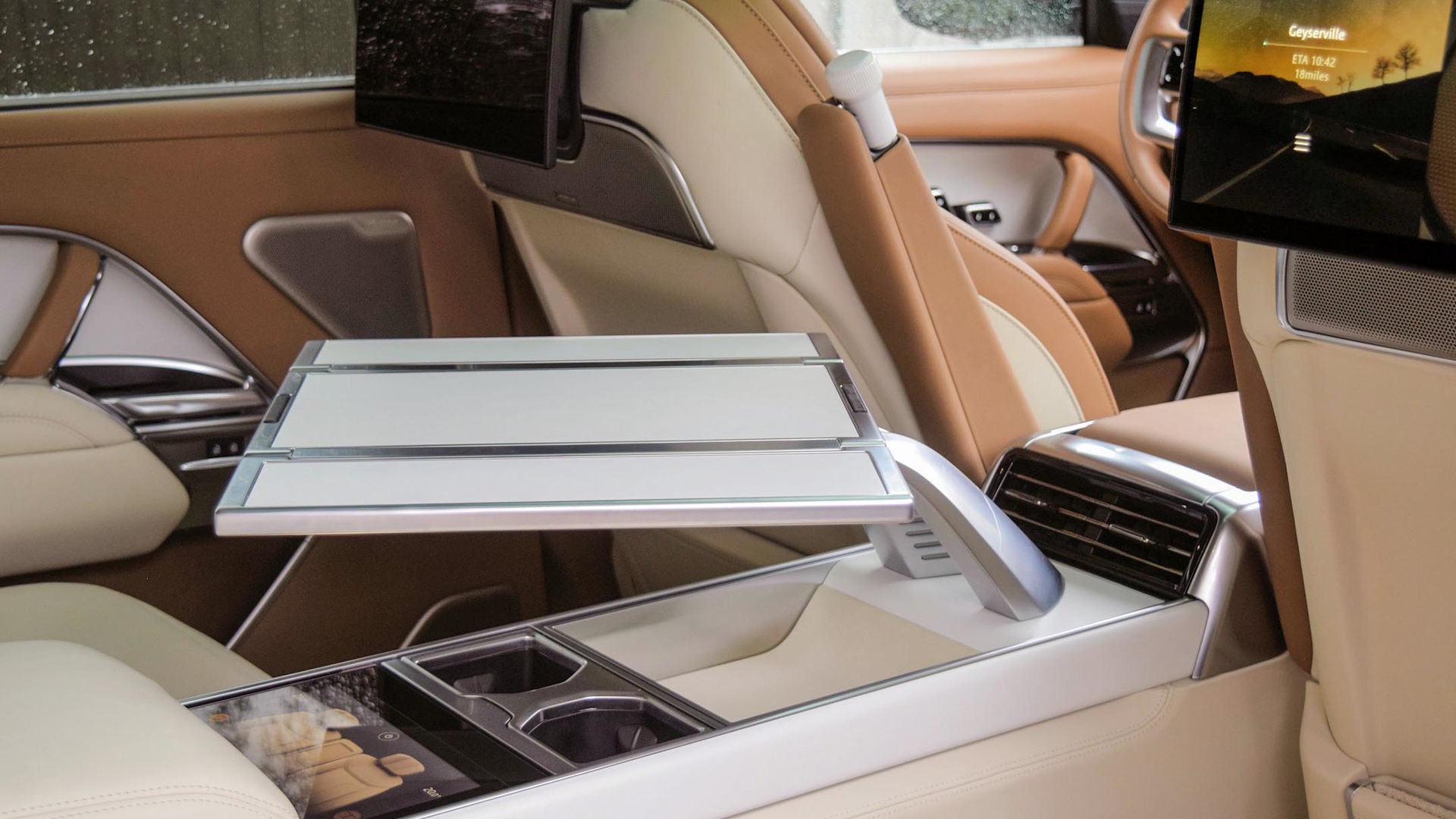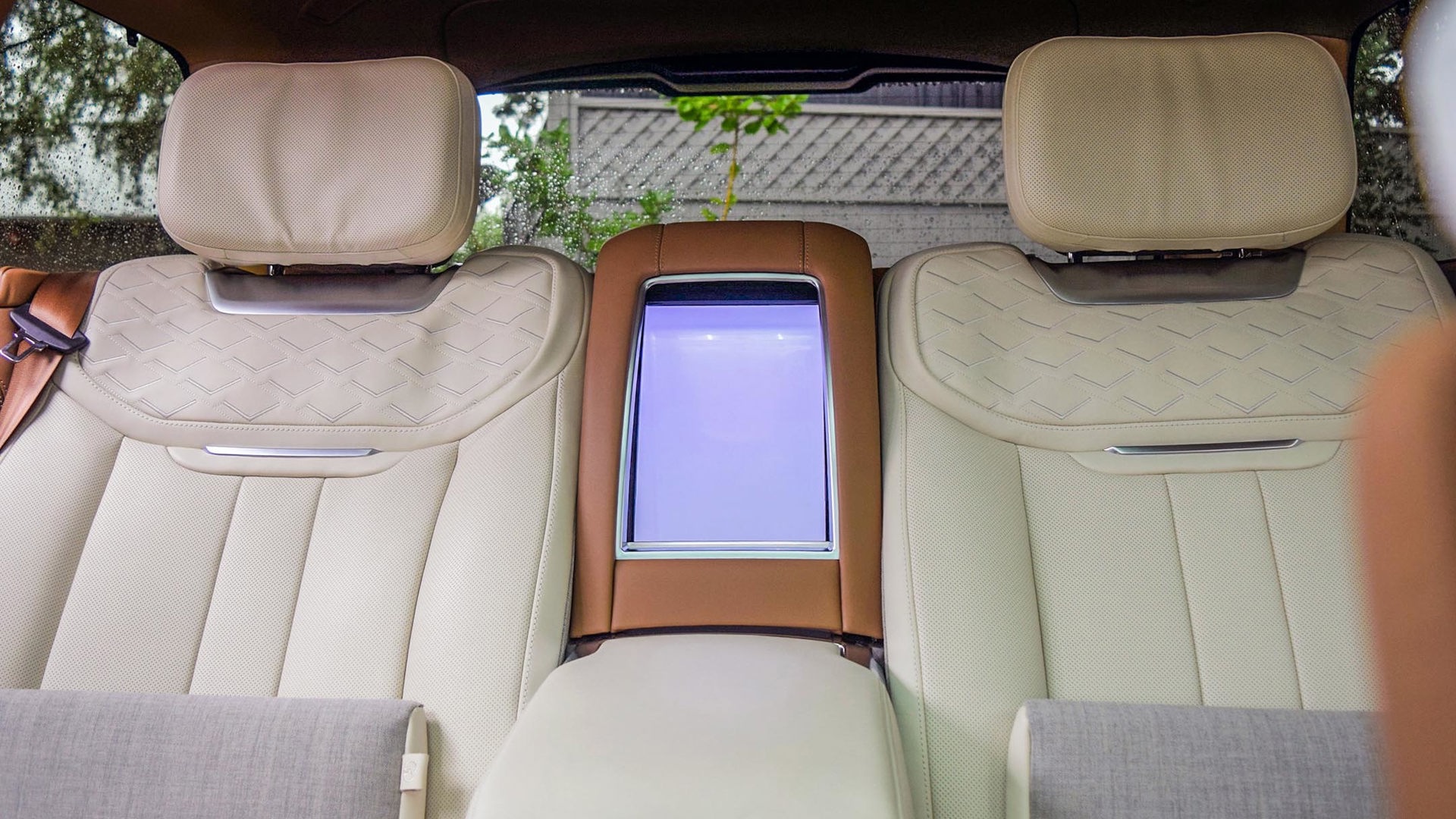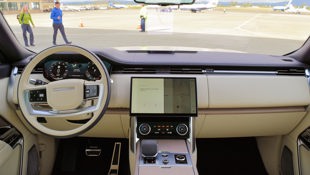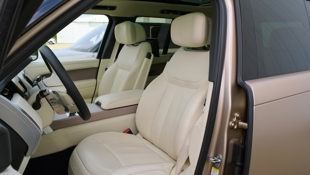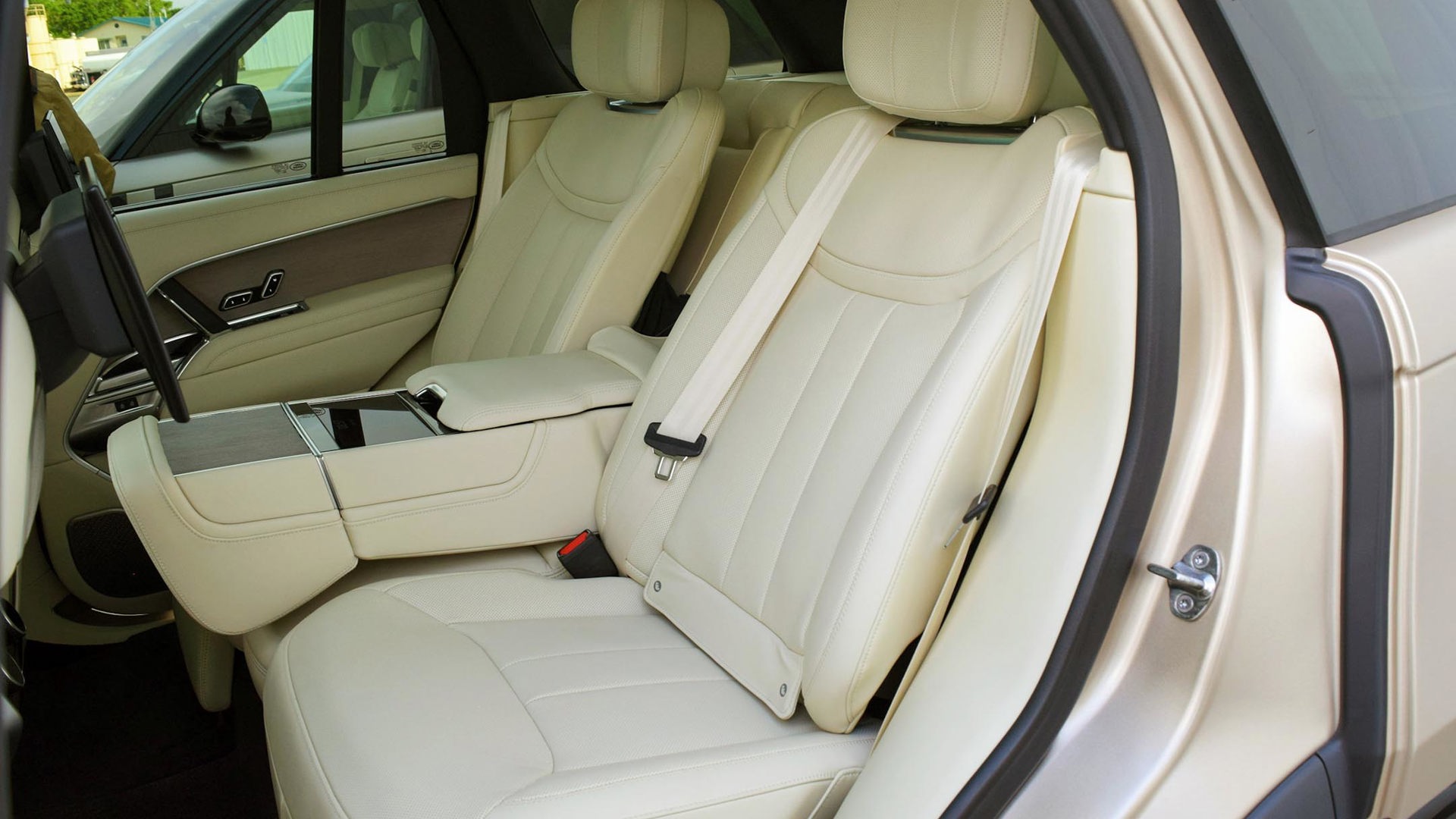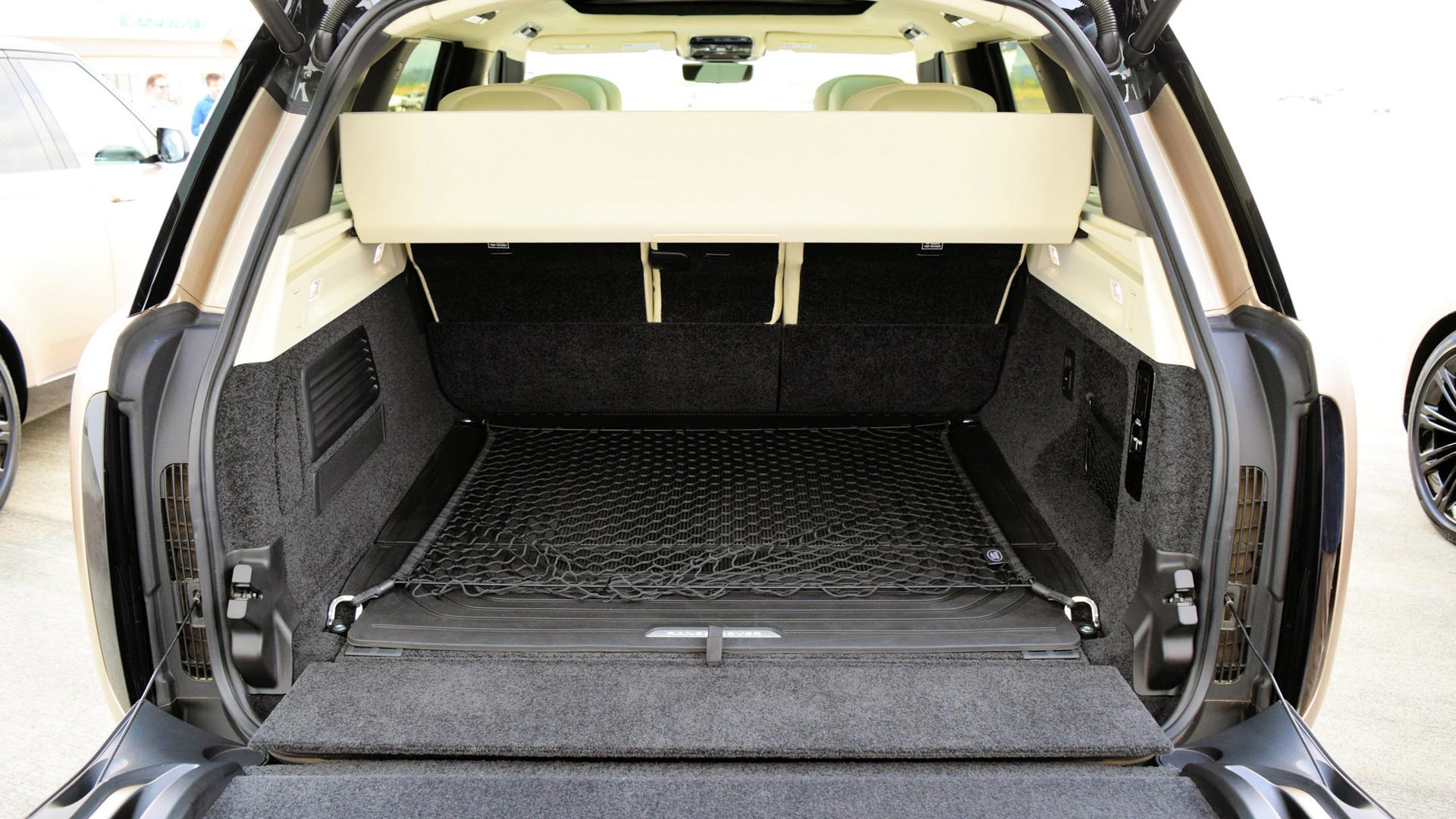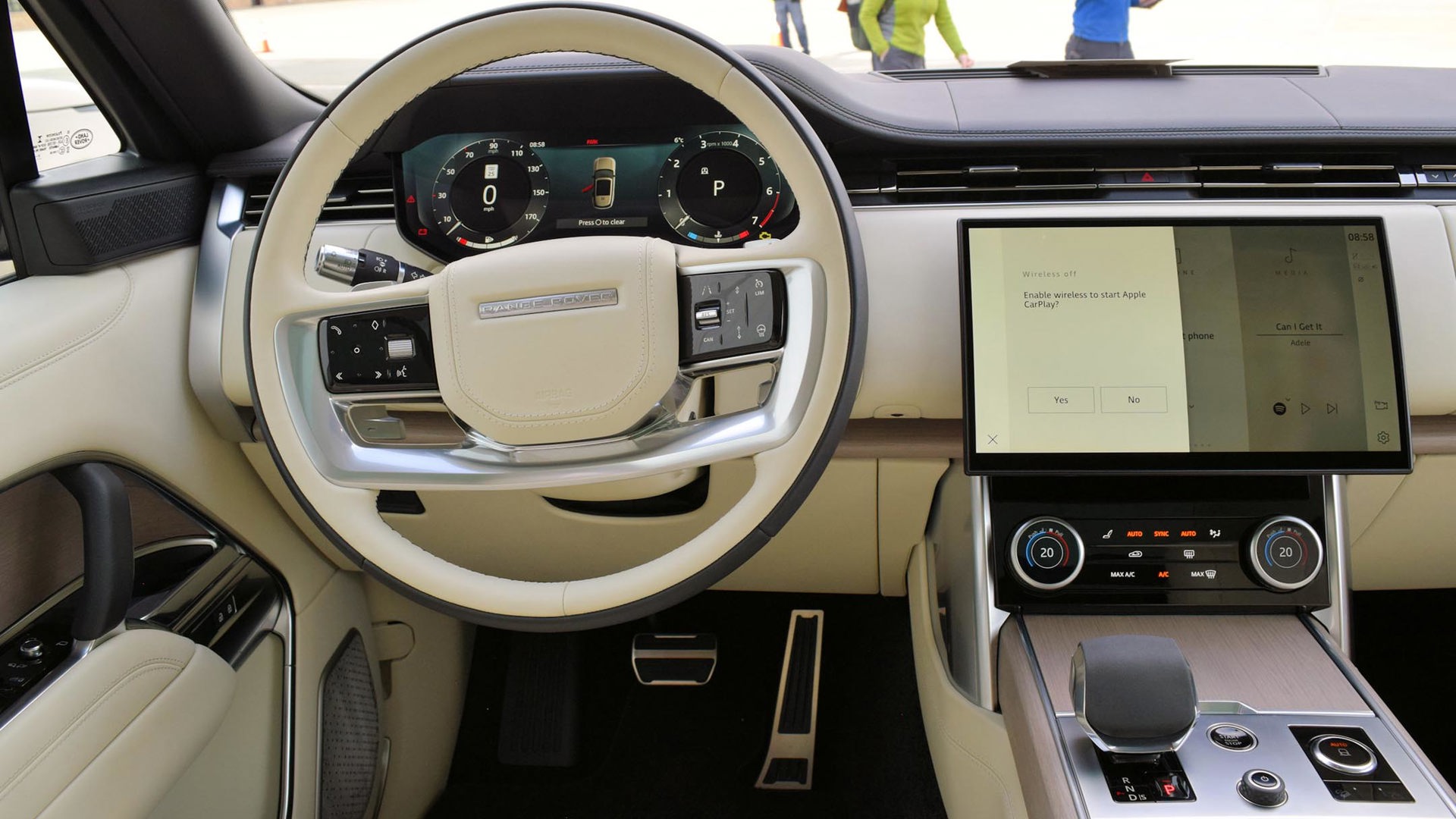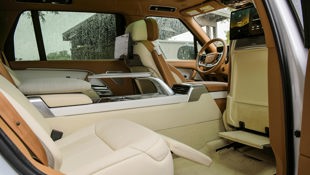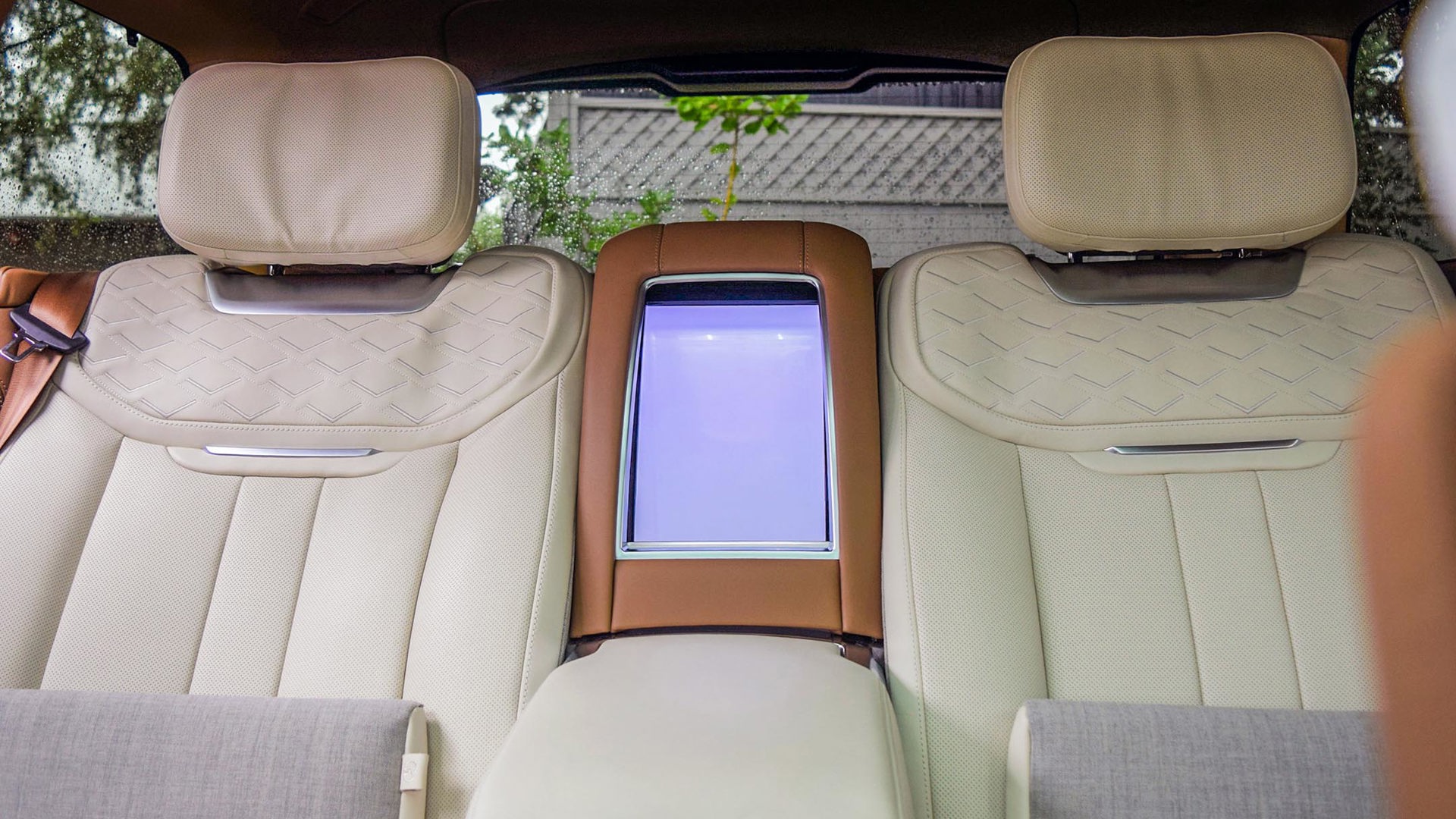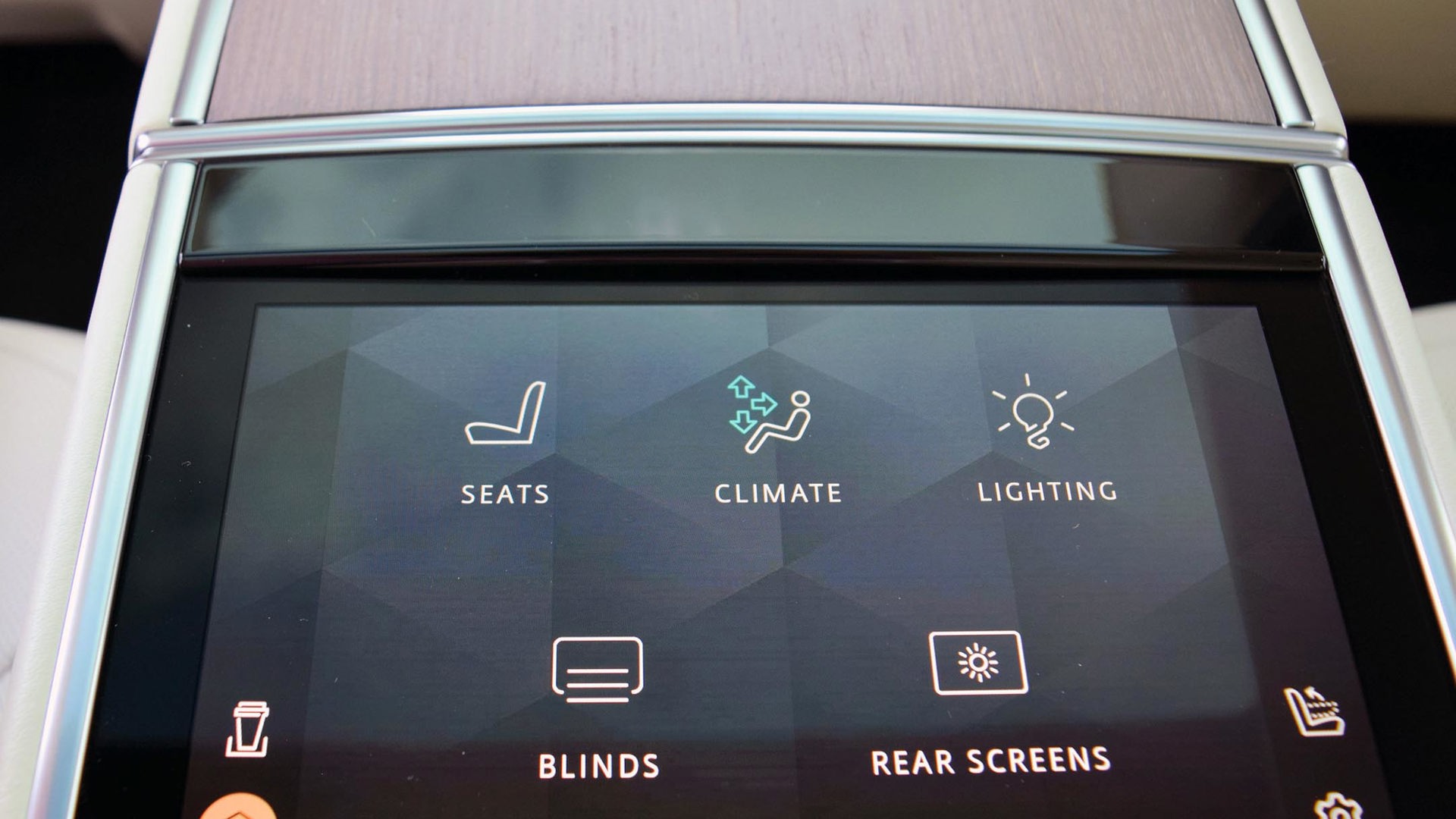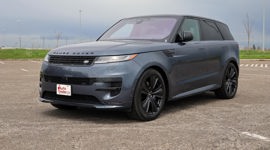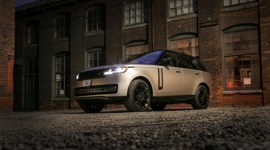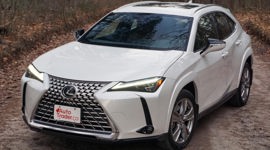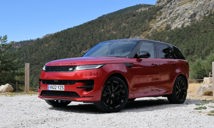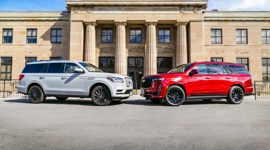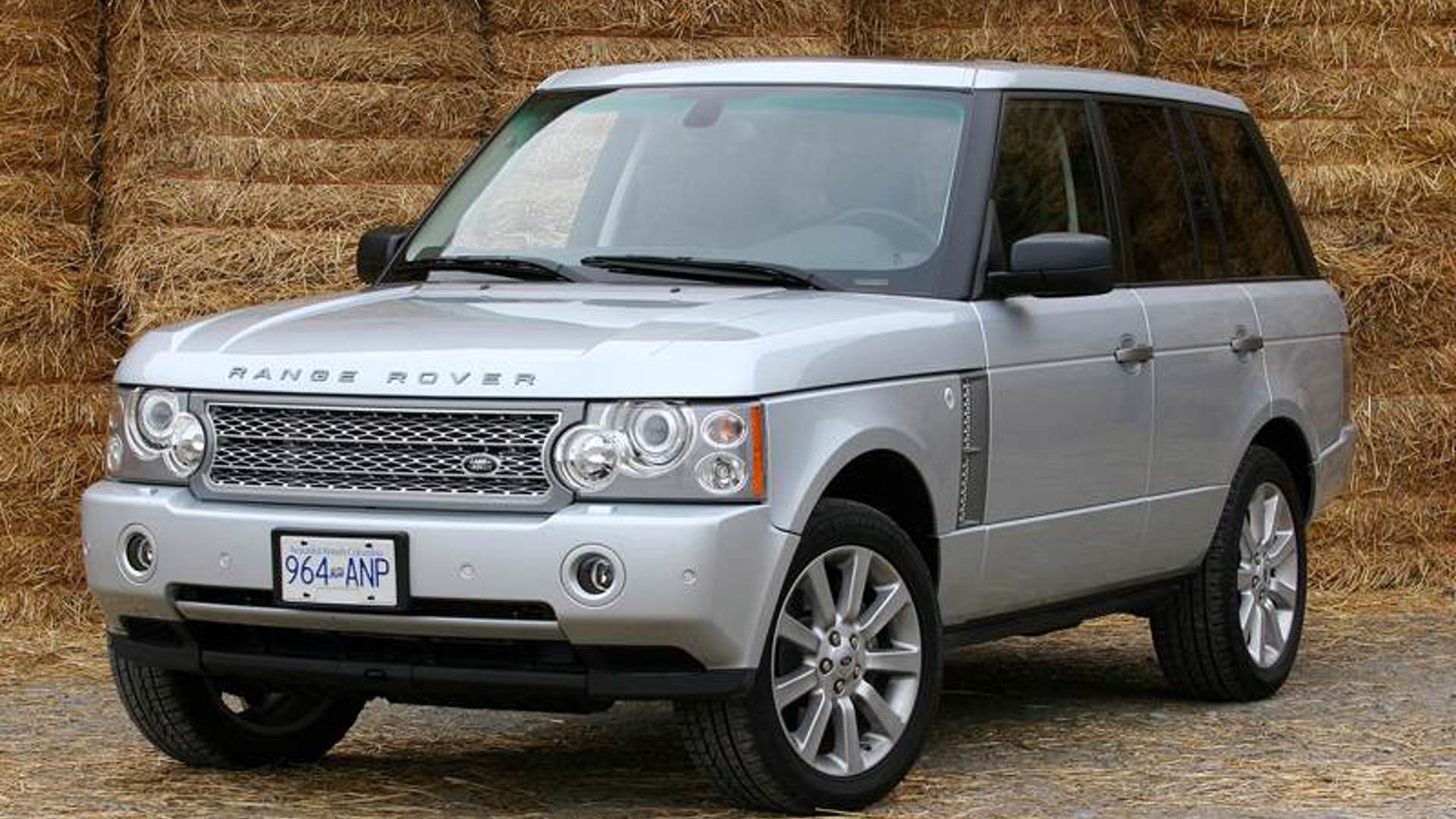As is the practice when testing any new vehicle with a reputation for ruggedness, we find ourselves off the beaten path, navigating a tricky and tight forest trail behind the wheel of the 2022 Land Rover Range Rover.
With a Jeep Wrangler, a Ford Bronco, or even a pickup like the new Chevrolet Silverado ZR2, this may seem like an easy task. They feature beefy components, lifted suspension, and impenetrable skid plates, all of which allows them to bash their way through as the earth submits to their mechanical muscle. But the new Range Rover has an incredible amount of finesse that makes conquering the outdoors feel like outsmarting it. It’s less stressful and less boisterous, and leaves you feeling as though an off-road obstacle was nothing more than a speed bump en route to your final destination. For shoppers seeking this kind of ultra-high-end experience, there is no substitute.
The Ultimate High-End Do-It-All
As much as Mercedes-Benz boasts that the GLS-Class is the S-Class of SUVs and Rolls-Royce or Bentley would have you believe their brands offer the ultimate four-wheel-drive luxury experience, the reality is this new Range Rover is one of the best flagship vehicles on offer. Its cabin, technology, powertrains, level of customization, and subtle styling details combine to produce something fantastic and capable.
To prove that, Land Rover let us test the off-road abilities of the new Range Rover through a whole host of obstacles, most of which were easily bypassed thanks to the low-range gearing of the four-wheel drive system and the air suspension that raises the vehicle to provide 295 mm (11.6 in) of ground clearance. There’s also four-wheel steering to help navigate the Range Rover in tight off-road trails (or parking lots), and everything from hill descent control to an automatic crawl mode to help limit the stress of off-road navigation. It can even crawl through water crossings, with a wade sensor that can highlight when the water levels are approaching the limit of 900 mm (35.4 in).
But as confident as the vehicle is off-road, it has the perfect on-road mannerisms. Trucks of this size can feel cumbersome and large, but the Range Rover feels surprisingly responsive. Credit goes to the active dynamics system that monitors the body and steering 500 times a second and offers continuously variable damping. The electronic active roll control also helps the vehicle feel stable even on curvy roads and through quick transitions.
Borrowing From BMW
The engines play a significant role in making the Range Rover feel so confident. The entry-level P400 SE models use a 395-hp turbocharged inline-six-cylinder engine, which also boasts a 48-volt mild hybrid system. Smooth and capable, we occasionally found the eight-speed automatic transmission to hesitate at low speeds.
The other option is the P530, which sports a 4.4L twin-turbo V8 engine with 523 hp and 553 lb-ft of torque. The motor comes courtesy of BMW, though Land Rover has its own tune and calibration. It feels fantastic, with immediate response, a muted growl, and the ability to blast the more than 2,400-kg (5,291-lb) SUV to surprising speeds in no time (or about 4.5 seconds to 100 km/h, for the number-crunchers). It’s not the first time the automaker has used a BMW powertrain in the Range Rover, though it last happened about two decades ago.
Next year, a plug-in hybrid (PHEV) version will arrive to help Range Rover get extra credit with the climate-conscious crowd, while a fully electric model is expected by 2024.
Four to Seven Passengers in Pure Luxury
The new Range Rover is also fairly flexible in terms of configuration. Shoppers can choose between long and standard wheelbases, as well as four-, five-, and seven-passenger arrangements. This allows the automaker to cater to those that would rather be driven in first-class luxury, as well as those looking for a more family-friendly vehicle.
The four-seater SV model is among the best cabin experiences on the road today, countering the likes of Rolls-Royce, Bentley, Cadillac, and more. Passengers in these vehicles can lounge back and watch TV on the rear-mounted screens in seats outfitted with leg rests. Or they can get work done on the smartly integrated tables that rise out of the rear centre console. Of course, the leisurely lifestyle encourages a chilled beverage on the road, and the Range Rover accommodates that with a fridge hidden between the two rear seatbacks. Frankly, it’s better than a first-class seat and comes closer to a private luxury spa-level experience. Shoppers can spec out a bespoke vehicle with unique upholstery and the fanciest trims. These SV models cost over $200,000 and, frankly, seem worth it.
The more mundane models are still lavish and high-end. The leather is soft and has that unmistakable high-quality texture that makes them a delight to touch. The seats are soft and comfortable, and through long hours of driving never left us sore or stiff. The trim and accent pieces also feel robust.
High-Tech Infotainment
There are plenty of knobs and controls to adjust the HVAC and media, although more detailed settings are accessible through the large 13.1-inch touchscreen infotainment system. It’s responsive and quick to react to inputs, and it is reasonably intuitive after you become accustomed to the icons to access the functions. It feels better to use than some non-touchscreen systems, although the capacitive controls found throughout the cabin occasionally require a firmer poke than expected. The system also features wireless Android Auto and Apple CarPlay, and there are wireless phone chargers to keep devices topped up en route. The driver has a clear head-up display and a large digital gauge cluster to keep them informed of the drive.
Audiophiles will likely be satisfied with the stereo system, while the entire cabin remains quiet thanks to an active noise cancellation system that employs headrest-integrated speakers to ensure any pesky and unwanted sounds are nullified. Our experience with the driver assistance and safety systems was also positive. The adaptive cruise control reacted predictably to traffic, and when combined with the confident lane-keeping system, the vehicle felt effortless to pilot through the highway.
Final Thoughts
It may seem that this is a new and exciting vehicle, yet the exterior of the Range Rover is still so familiar. The front end is a signature that can’t be reimagined, but the designers smoothed out the shoulder line and added hidden taillights around back. There’s a pair of shark-fin antennas on the roof that house all the telematics gear (apparently having it all in one fin caused some overheating).
The Range Rover is an icon. According to company executives, customers didn’t want something all-new, but rather a better version of what they’ve already come to love and appreciate. It’s a hard target to hit, but there’s no doubt the automaker has delivered.
When it lands this year, the entry-level 2022 Range Rover P400 SE will feature a $128,845 price tag, including the $2,445 freight fee. The V8 P530 SE starts at $141,745, while a fully loaded Range Rover P530 First Edition will cost $184,445. The 2023 model year versions will be slightly more expensive, and the lineup will include the Range Rover P440e SE PHEV, which will start at $137,895, and the ultra-high-end and customizable SV models, which will start at $223,345.
